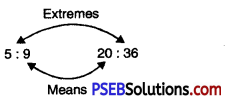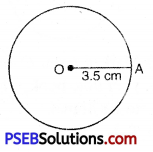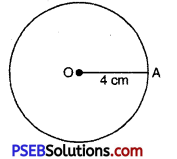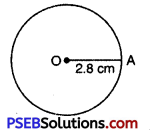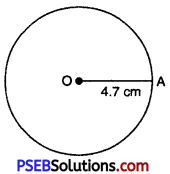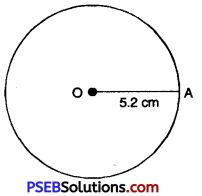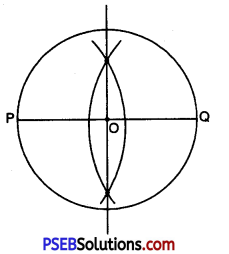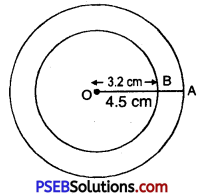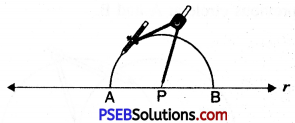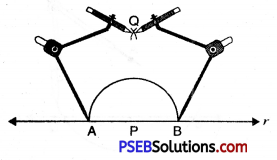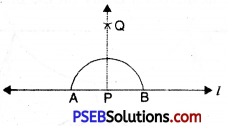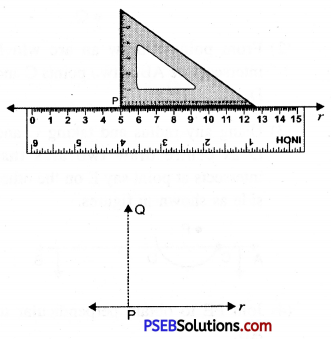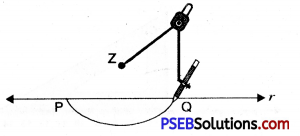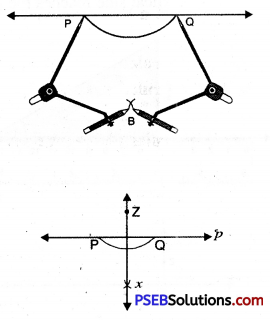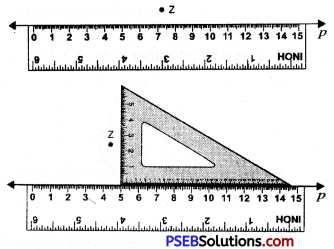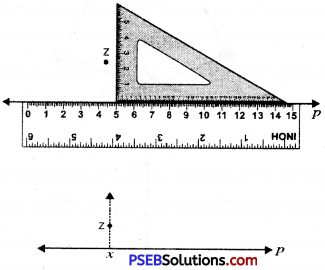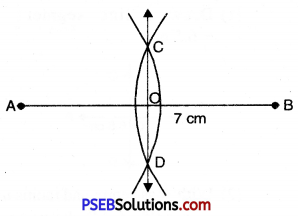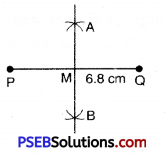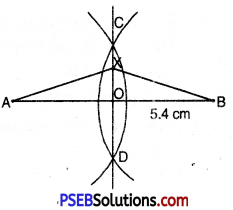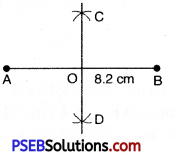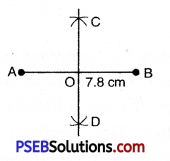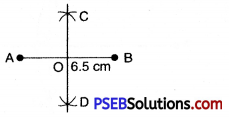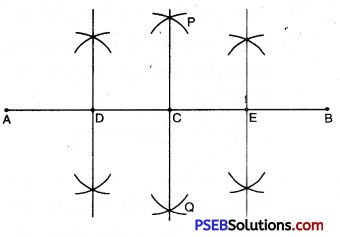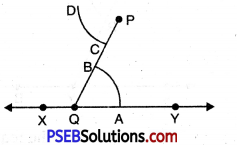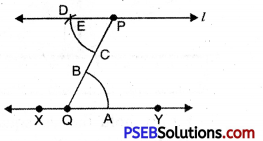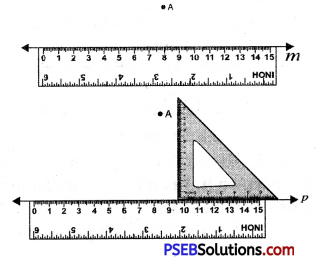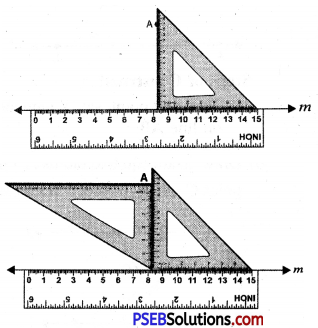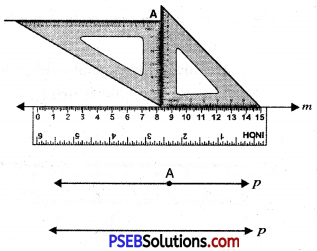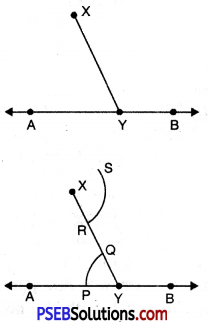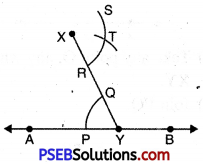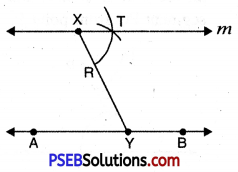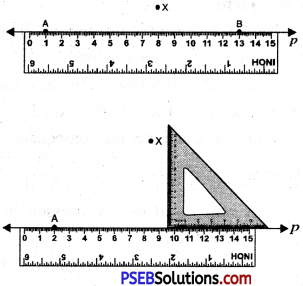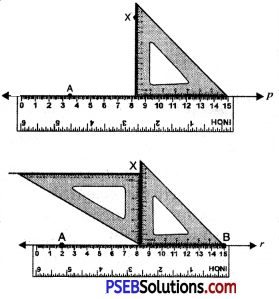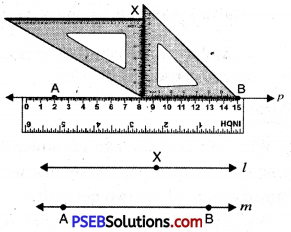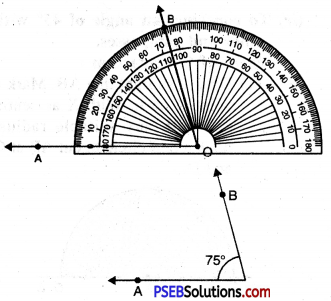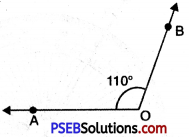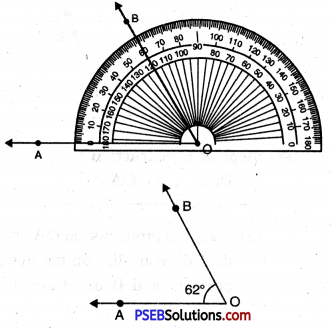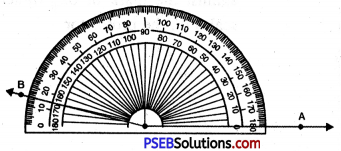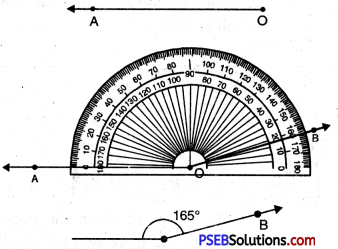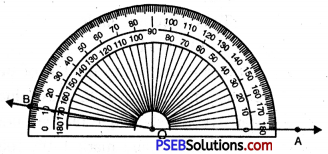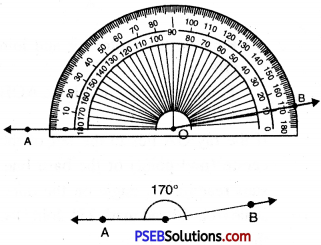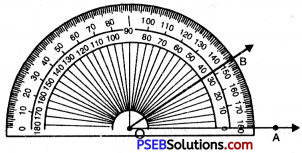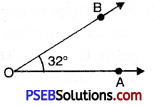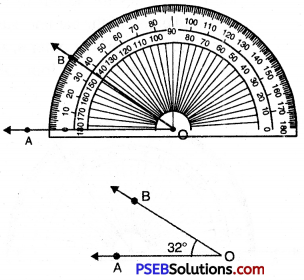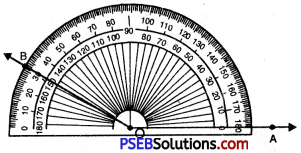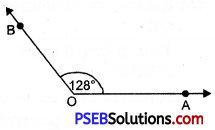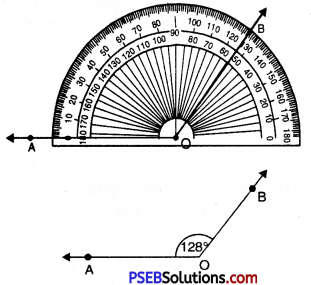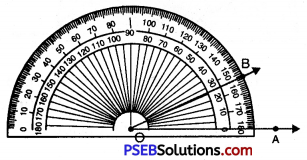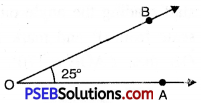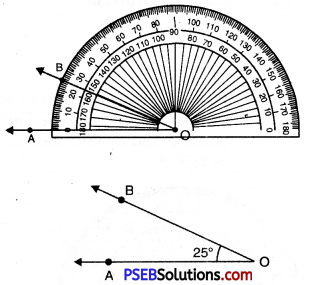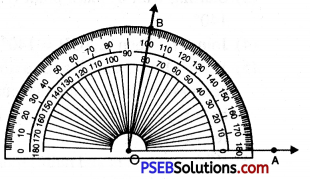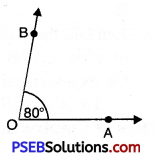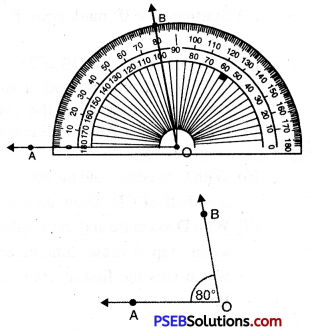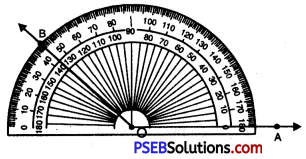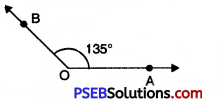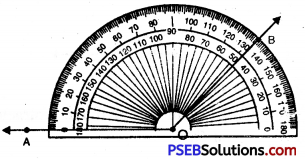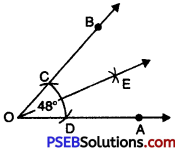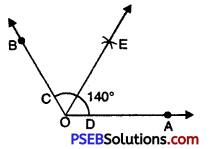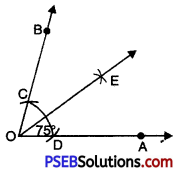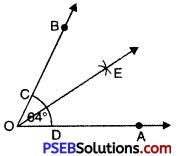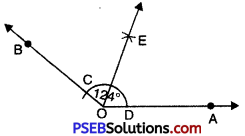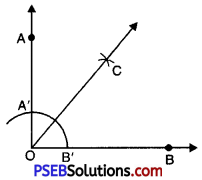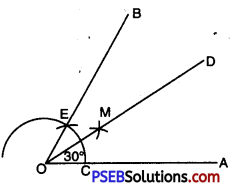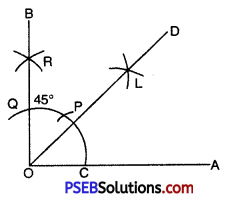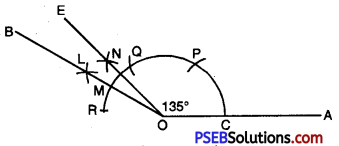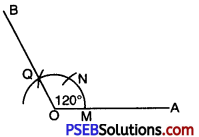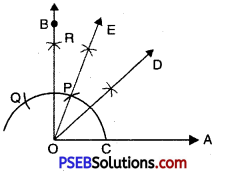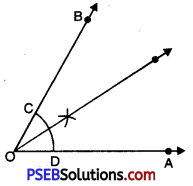Punjab State Board PSEB 6th Class Hindi Book Solutions Hindi Rachana Niband Lekhan निबंध-लेखन Exercise Questions and Answers, Notes.
PSEB 6th Class Hindi रचना निबंध-लेखन
1. अमृतसर का हरिमन्दिर साहिब
सिक्खों के चौथे धर्म गुरु रामदास जी द्वारा अमृतसर की स्थापना हुई। अमृतसर का अर्थ है-अमृतसर अर्थात् अमृत का तालाब। गुरु रामदास जी के बाद उनके सपुत्र अर्जन देव जी ने इस मन्दिर का विकास किया। सिक्ख धर्म के पवित्र ग्रन्थ ‘गुरु ग्रन्थ साहिब’ को मन्दिर में प्रतिष्ठित करने का श्रेय भी गुरु अर्जन देव जी को ही है। सिक्खों ने जब राजनीतिक क्षेत्र में प्रगति की तो इस मन्दिर को भव्य रूप दिया जाने लगा। महाराजा रणजीत सिंह के राज्य में इस मन्दिर ने प्रगति की। इसे ‘दरबार साहिब’ तथा ‘हरिमन्दिर साहिब’ का नाम दिया गया है।
हरिमन्दिर साहिब की शोभा भी अद्वितीय है। मन्दिर के बाहर का दृश्य भी बड़ा सुन्दर है। यहां अनेक दुकानें हैं। मन्दिर के भीतर का दृश्य मुग्धकारी है। मन्दिर विशाल सरोवर से घिरा हुआ है। मन्दिर का सारा क्षेत्र संगमरमर के पत्थर से बना हुआ है। आंगन पार करने पर ऊंचा ध्वज स्तम्भ है जिस पर केसरिया ध्वज हवा में बातें करता है। एक बड़ा नगाड़ा भी है जिसके द्वारा सायंकाल तथा प्रात:काल की प्रार्थनाओं की घोषणा की जाती है। दिनभर यहां भजन, कीर्तन की गूंज रहती है। मन्दिर की तीन मंज़िलें हैं। नीचे की मंजिल में एक स्वर्ण जड़ित सिंहासन पर ‘श्री गुरु ग्रन्थ साहिब जी’ सुशोभित होते हैं। मन्दिर का भीतरी भाग अत्यन्त सुन्दर है। यह सोने, चांदी और पच्चीकारी से मढ़ा हुआ है। मन्दिर के कुछ अपने नियम हैं जिनका श्रद्धालुओं को पालन करना पड़ता है। विशेष अवसरों पर मन्दिर को विशेष ढंग से सजाया जाता है। इसको फूलों की तोरण तथा बिजली की रोशनी से सजा कर अलौकिक रूप दिया जाता है।
अमृतसर का हरिमन्दिर साहिब भारतीय संस्कृति, कला तथा धर्म का प्रत्यक्ष रूप है। यह सिक्खों की धर्म के प्रति आस्था को प्रकट करता है। इसके साथ ही यह एक युग के’ इतिहास की याद भी दिलाता है। इसके माध्यम से ही सिक्ख गुरुओं तथा अनेक शिष्यों का योगदान प्रशंसनीय रहा है। ऐसे धार्मिक स्थान हमारे लिए प्रेरणा का स्रोत हैं। ये स्थान हमारे मन में आस्तिकता की भावना और अपनी संस्कृति की रक्षा के भाव जगाते हैं। ऐसे स्थानों का सम्मान और उनकी रक्षा करना प्रत्येक भारतवासी का परम कर्तव्य है।
अमृतसर का हरिमन्दिर साहिब एक पावन तीर्थ स्थल है। वहां जाकर हृदय को अपूर्व शान्ति मिलती है। श्रद्धालु वहां जाकर जो कुछ मांगते हैं, उनकी आशाएं पूर्ण होती हैं। भला भगवान् के दरबार से कोई खाली लौट सकता है? इस सरोवर का अमृत जल जो पीता है उसका मन स्वच्छता के निकट पहुंचने लगता है।

2. महात्मा गाँधी
अथवा
मेरा प्रिय नेता
महात्मा गाँधी भारत के महान् नेताओं में से थे। उन्होंने अहिंसा और सत्याग्रह के बल से अंग्रेजों को भारत छोड़ने पर विवश कर दिया। दुनिया के इतिहास में उनका नाम हमेशा अमर रहेगा। इनका जन्म 2 अक्तूबर, सन् 1869 को पोरबन्दर (गुजरात) में हुआ। आप मोहनदास कर्मचन्द गाँधी के नाम से प्रख्यात हुए। आपके पिता राजकोट राजा के दीवान थे। माता पुतली बाई बहुत धार्मिक प्रवृत्ति की एवं सती-साध्वी स्त्री थीं जिनका प्रभाव गाँधी जी पर आजीवन रहा।
इनकी प्रारम्भिक शिक्षा पोरबन्दर में हुई। मैट्रिक तक की शिक्षा आपने स्थानीय स्कूलों से ही प्राप्त की। तेरह वर्ष की आयु में कस्तूरबा के साथ आपका विवाह हुआ। आप कानून पढ़ने विलायत गए। वहाँ से बैरिस्टर बनकर स्वदेश लौटे। मुम्बई में आकर वकालत का कार्य आरम्भ किया। किसी विशेष मुकद्दमे की पैरवी करने के लिए वे दक्षिणी अफ्रीका गए। वहाँ भारतीयों के साथ अंग्रेज़ों का दुर्व्यवहार देखकर उनमें राष्ट्रीय भावना जागृत हुई।
जब सन् 1915 में भारत वापस लौट आए तो अंग्रेजों का दमन-चक्र ज़ोरों पर था। रौलेट एक्ट जैसे काले कानून लागू थे। सन् 1919 की जलियाँवाला बाग के नर-संहार से देश बेचैन था। गांधी जी ने देश वासियों को अंग्रेज़ों की गुलामी से आजाद करवाने का प्रण लिया और इसके लिए अहिंसा का मार्ग अपनाते हुए सन् 1920 में असहयोग आन्दोलन चलाया। इसके बाद सन् 1928 में जब ‘साइमन कमीशन’ भारत आया तो गाँधी जी ने उसका पूर्ण रूप से बहिष्कार किया। सन् 1930 में नमक आन्दोलन तथा डाण्डी यात्रा की। सन् 1942 के अन्त में द्वितीय महायुद्ध के साथ ‘अंग्रेज़ो! भारत छोड़ो’ आन्दोलन का बिगुल बजाया और कहा, “यह मेरी अन्तिम लड़ाई है।” वे अपने अनुयायियों के साथ गिरफ्तार हुए। इस प्रकार अन्त में 15 अगस्त, सन् 1947 को अंग्रेजों ने भारत देश को स्वतंत्र घोषित किया और देश छोड़ कर चले गए।
स्वतन्त्रता का पुजारी बापू गाँधी 30 जनवरी, सन् 1948 को एक मनचले नौजवान नाथूराम गोडसे की गोली का शिकार हुआ। गाँधी जी मरकर भी अमर हैं। युग-युगान्तरों तक उनका नाम अमन के पुजारियों के इतिहास में स्वर्णाक्षरों में लिखा जाएगा।

3. नदी की आत्मकथा
मैं नदी हूँ। दो तटों में बंधी होने के कारण मैं तटिनी भी कहलाती हूँ। मेरा विशाल रूप कभी किसी को लुभाता है तो कभी किसी को डराता है लेकिन वास्तव में मैं सब का हित ही चाहती हूँ और सभी के भरण-पोषण का कारण बनती हूँ। इसीलिए मानव-सभ्यता के आरंभ के साथ ही जन-जातियां मेरे किनारों पर ही बसना चाहती रही हैं। संसार की सारी जातियों, सभ्यताओं और संस्कृतियों का विकास मेरे किनारों पर ही हुआ है। यह भिन्न बात है कि अलग-अलग स्थानों-देशों में उनका विकास मेरी अलग-अलग बहिनों-सहेलियों के
किनारों पर ही हुआ था। गंगा, यमुना, महानदी, गोदावरी, वोल्गा, नील, ह्वांग आदि नाम अलग-अलग हो सकते हैं। लेकिन उन का जन्म, शक्ल-सूरत, रूप-रंग, बहाव आदि सब एक समान ही है और सब का अंत एक ही है-सागर के साथ एकाकार हो जाना और अपना अस्तित्व सदा के लिए खो देना, सागर की गहराइयों में मिल जाने के बाद हमारा नाम धाम अस्तित्व सब मिट जाता है।
4. यदि मैं अध्यापक होता !
यदि मैं अध्यापक होता तो कक्षा में मेरी स्थिति वही होती जो मस्तिष्क की शरीर में, इंजन की रेलगाड़ी में तथा पंखे की वायुयान में होती है। मुझे अध्यापन कार्य तथा छात्रों का दिशा बोध करना पड़ता। निस्संदेह मेरा काम काफ़ी जटिल होता और कठिनाइयाँ तथा चुनौतियाँ पग-पग पर मेरे रास्ते में रुकावटें डालती हुई दिखाई देतीं। लेकिन मैं अपने कदम आगे की ओर ही बढ़ाता जाता।
यदि मैं अध्यापक होता तो सबसे पहले अनुशासन स्थापित करता क्योंकि अनुशासन राष्ट्र की नींव होती है। मैं विद्यालय में अनुशासन स्थापित करने की योजना बनाता। मैं यह भली प्रकार से जानता हूँ कि विद्यार्थी अनुशासन को तभी भंग करते हैं जब उनकी इच्छाएँ अधूरी रह जाती हैं। मैं विद्यालय के अनेक कार्यों में विद्यालयों का सहयोग प्राप्त करता। मैं उन्हें सहकारी समिति बनाने के लिए कहता। वे अपने चुनाव करते और देर से आने वाले विद्यार्थियों के लिए स्वयं ही दंड विधान करते। इस प्रकार वे स्वयं को विद्यालय का अंग मानने लगते तथा ऐसा करके मैं अनुशासन स्थापित करने में सफल हो जाता।
यदि मैं अध्यापक होता तो मैं छात्रों की कठिनाइयों का पता लगाता। मैं सहयोगी अध्यापकों से पूछता कि वे किस प्रकार आदर्श शिक्षा देना चाहते हैं ? इन तथ्यों को ध्यान में रखते हुए मैं अपनी नीति का ऐसा स्वरूप निश्चित करता जिसमें विद्यार्थी प्रसन्न रहते। इससे उनमें आत्म-विश्वास तथा संतोष की भावना दृढ़ होती है।
मैं जानता हूँ कि आज के बालक कल के नेता होते हैं। अतः राष्ट्र तभी उन्नति कर सकता है जब विद्यालय के बालकों को अच्छी शिक्षा दी जाए। उन्हें राष्ट्र के नेता बनाने के लिए उनके बाल्य जीवन से ही नेतृत्व के गुणों का विकास करना अति आवश्यक है। मैं उनको आदर्श नागरिक बनने की शिक्षा देता ताकि राष्ट्र उनके नेतृत्व से लाभ उठा सकता।
मैं उपदेश देने की बजाय अपना आदर्श प्रस्तुत करने पर बल देता। मैं दूसरों को कुछ नहीं कहता और उनको स्वयं कुछ करके दिखाता। अन्य अध्यापक भी मुझ से प्रेरित होकर कर्मशील हो जाते। चूंकि बालकों में अनुकरण की प्रवृत्ति होती है अतः वे मुझे और अध्यापकों को कार्य में लगे देखकर प्रेरित होते।
मैं छात्रों के साथ मित्रता का व्यवहार करता। किसी पर भी अनुचित दबाव न डालता। काश ! मैं अध्यापक होता और अपने स्वप्नों को साकार रूप देता।

5. लाला लाजपत राय
भारत के इतिहास में ऐसे वीर पुरुषों की कमी नहीं है, जिन्होंने देश की आज़ादी के लिए अपने जीवन का बलिदान कर दिया। ऐसे वीर शहीदों में पंजाब केसरी लाला लाजपत राय का नाम याद किया जाएगा। लाला जी का जन्म जिला लुधियाना के दुढिके गाँव में सन् 1865.ई० में हुआ। इनके पिता लाला राधाकृष्ण वहाँ अध्यापक थे। लाला लाजपत राय ने मैट्रिक की परीक्षा में छात्रवृत्ति ली। फिर गवर्नमैंट कॉलेज में दाखिल हुए। वहाँ एफ० ए० की परीक्षा पास की, फिर मुख्यारी और इसके बाद वकालत पास की।
वकालत पास करके पहले वे जगराओं में रहे। फिर हिसार आकर काम करने लगे। वहाँ ये तीन वर्ष तक म्यूनिसिपल कमेटी के सेक्रेटरी रहे। इसके बाद लाला जी लाहौर चले गए। वहाँ उनको आर्य समाज की सेवा करने का मौका मिला। लाला जी ने डी० ए० वी० संस्थाओं की बड़ी सेवा की। गुरुदत्त और महात्मा हंसराज इनके साथ थे। पहले इनका कार्यक्षेत्र आर्य समाज था। बाद में ये राष्ट्रीय कार्यों में भाग लेने लगे। रावलपिंडी केस में लाला जी ने वहाँ के लोगों की पैरवी की। इस प्रकार नहरी पानी के टैक्स पर किसानों में जब उत्तेजना फैली तो इन्होंने उनका नेतृत्व किया।
लाला जी सरकार की आँखों में खटकने लगे। परिणामस्वरूप सरकार उन्हें पकड़ने का बहाना सोचने लगी। उन्हीं दिनों लोकमान्य बालगंगाधर तिलक से प्रभावित क्रान्तिकारी लोग उत्तेजना फैला रहे थे। बंग-भंग के आन्दोलन के समय पंजाब में भी लोगों में असन्तोष फैलने लगा। बस, सरकार को अच्छा मौका मिल गया। उसने लाला जी को पकड़ कर मांडले जेल भेज दिया। वहाँ से छूटकर लाला जी ने यूरोप और अमेरिका की यात्रा की। सन् 1928 ई० में साइमन कमीशन लाहौर आने वाला था। लाला जी उसके विरुद्ध बॉयकाट के प्रदर्शन के लीडर थे। गोरी सरकार ने बौखलाकर जलूस पर लाठियां बरसानी आरम्भ कर दीं। कम्बख्त असिस्टैंट पुलिस सुपरिण्टैंटेंट ने लाला जी पर लाठियाँ बरसाईं। इन घावों के कारण लाला जी 17 नवम्बर, सन् 1928 को प्रात: काल समूचे भारत को बिलखता छोड़कर इस संसार से चल बसे।
शहीदों की चिताओं पर लगेंगे हर बरस मेले। वतन पर मिटने वालों का यही बाकी निशां होगा।

6. गुरु नानक देव जी
गुरु नानक देव जी का जन्म शेखूपुरा के तलवंडी नामक गाँव में सन् 1469 ई० में हुआ था। इनके पिता का नाम मेहता कालू राम और माता का नाम तृप्ता देवी था। जब गुरु नानक देव जी 7 वर्ष के हुए तो इनके पिता जी ने इन्हें शिक्षा ग्रहण करने के लिए भेजा। लेकिन इनका मन ईश्वर भक्ति में अधिक लगता था। वह सदा ईश्वर-भक्ति में लीन रहते थे। पिता जी ने सोचा कि पुत्र यदि ईश्वर-भक्ति में रहा और कुछ कमाना न सीखा तो आगे चलकर क्या करेगा। उन्होंने नानक को व्यापार में डाला। पिता ने एक बार इन्हें कुछ रुपए देकर सच्चा सौदा करने को कहा। मार्ग में इन्हें कुछ भूखे साधु मिले। इन्होंने पैसों से उन्हें भोजन करवा दिया।
20 वर्ष की आयु में गुरु नानक देव जी ने सुल्तानपुर के नवाब के मोदीखाने में नौकरी कर ली। यहाँ भी वे अपना वेतन ग़रीबों और साधुओं में बाँट देते थे।
गुरु नानक देव जी का विवाह बटाला निवासी मूलचन्द की सपुत्री सुलक्खणी देवी से हुआ। इनके दो पुत्र हुए-श्रीचन्द और लख्मी दास। इन्होंने देश तथा विदेश की यात्राएँ भी की। इनकी यात्राओं को उदासियों का नाम दिया गया। इन्होंने लोगों को ईश्वर सम्बन्धी अपने अनुभव बताए। उन्होंने ईश्वर को निराकार बताया और कहा कि धर्म के नाम पर झगड़ना अच्छा नहीं है। उन्होंने यह भी कहा कि अच्छे कामों से ही ईश्वर मिलता है, बुरे कामों से नहीं। हिन्द्र तथा मुसलमान सभी उनका आदर करते थे। सन् 1539 ई० में आप करतारपुर में ज्योति-ज्योत समा गए। वहाँ विशाल गुरुद्वारा बना हुआ है।
7. सन्त सिपाही गुरु गोबिन्द सिंह जी
श्री गुरु गोबिन्द सिंह जी सिक्खों के दसवें गुरु हैं। वे एक महान् शूरवीर और तेजस्वी नेता थे। उन्होंने मुग़लों के अन्याय के विरुद्ध आवाज़ उठाई थी और ‘सत श्री अकाल’ का नारा दिया था। उन्होंने कायरों को वीर और वीरों को सिंह बना दिया था। काल का अवतार बनकर उन्होंने शत्रुओं के छक्के छुड़ा दिए थे। इस तरह उन्होंने धर्म, जाति और राष्ट्र को नया जीवन दिया था।
गुरु गोबिन्द सिंह जी का जन्म 22 दिसम्बर, सन् 1666 ई० को पटना में हुआ। इनका बचपन का नाम गोबिन्द राय रखा गया। इनके पिता नौवें गुरु श्री तेग़ बहादुर जी कुछ समय बाद पंजाब लौट आए थे। परन्तु यह अपनी माता गुजरी जी के साथ आठ साल तक पटना में ही रहे। · गोबिन्द राय बचपन से ही स्वाभिमानी और शूरवीर थे। घुड़सवारी करना, हथियार चलाना, साथियों की दो टोलियाँ बनाकर युद्ध करना तथा शत्रु को, जीतने के खेल खेलते थे। वे खेल में अपने साथियों का नेतृत्व करते थे। उनकी बुद्धि बहुत तेज़ थी। उन्होंने आसानी से हिन्दी, संस्कृत और फ़ारसी भाषा का अच्छा ज्ञान प्राप्त कर लिया था।
उन दिनों औरंगजेब के अत्याचार ज़ोरों पर थे। वह तलवार के ज़ोर से हिन्दुओं को मुसलमान बना रहा था। कश्मीर में भी हिन्दुओं को ज़बरदस्ती मुसलमान बनाया जा रहा था। भयभीत कश्मीरी ब्राह्मण गुरु तेग़ बहादुर जी के पास आए। उन्होंने गुरु जी से हिन्दू धर्म की रक्षा के लिए प्रार्थना की। गुरु तेग़ बहादुर जी ने कहा कि इस समय किसी महापुरुष के बलिदान की आवश्यकता है। पास बैठे बालक गोबिन्द राय ने कहा-“पिता जी, आप से बढ़कर महापुरुष और कौन हो सकता है?” तब गुरु तेग़ बहादुर जी ने बलिदान देने का निश्चय कर लिया। वे हिन्दू धर्म की रक्षा के लिए दिल्ली पहुंच गए और वहाँ धर्म की रक्षा के लिए अपना बलिदान दे दिया।
पिता जी की शहीदी के बाद गोबिन्द राय 11 नवम्बर, सन् 1675 ई० को गुरु गद्दी पर बैठे। उन्होंने औरंगज़ेब के अत्याचारों के विरुद्ध आवाज़ उठाई और हिन्दू धर्म की रक्षा का बीड़ा उठाया। उन्होंने गुरु परम्परा को बदल दिया। वे अपने शिष्यों को सैनिक-शिक्षा देते थे।
सन् 1699 में वैशाखी के दिन गुरु गोबिन्द राय जी ने आनन्दपुर साहब में दरबार सजाया। भरी सभा में उन्होंने बलिदान के लिए पाँच सिरों की मांग की। गुरु जी की यह माँग सुनकर सारी सभा में सन्नाटा छा गया। फिर एक-एक करके पाँच व्यक्ति अपना बलिदान देने के लिए आगे आए। गुरु जी एक-एक करके उन्हें तम्बू में ले जाते रहे। इस प्रकार उन्होंने पाँच प्यारों का चुनाव किया। फिर उन्हें अमृत छकाया और स्वयं भी उनसे अमृत छका। इस तरह उन्होंने अन्याय और अत्याचार का विरोध करने के लिए खालसा पंथ की स्थापना की। उन्होंने अपना नाम गोबिन्द राय से गोबिन्द सिंह रख लिया।
गुरु जी की बढ़ती हुई सैनिक शक्ति को देखकर कई पहाड़ी राजे उनके शत्रु बन गए। पाऊंटा दुर्ग के पास भंगानी के स्थान पर फतेह शाह ने गुरु जी पर आक्रमण कर दिया। सिक्ख बड़ी वीरता से लड़े। अन्त में गुरु जी विजयी रहे।
औरंगज़ेब ने गुरु जी की शक्ति समाप्त करने का निश्चय किया। उसने लाहौर और सरहिन्द के सूबेदारों को गुरु जी पर आक्रमण करने का हुक्म दिया। पहाड़ी राजा मुग़लों के साथ मिल गए। उन सबने कई महीनों तक आनन्दपुर को घेरे रखा। गुरु जी को काफ़ी हानि उठानी पड़ी। मुग़ल सेना से लड़ते-लड़ते गुरु जी चमकौर जा पहुँचे। चमकौर के युद्ध में गुरु जी के दोनों बड़े साहिबजादे अजीत सिंह और जुझार सिंह शत्रुओं से लोहा लेते हुए वीरगति को प्राप्त हुए। उनके दोनों छोटे साहिबजादों ज़ोरावर सिंह और फ़तेह सिंह को सरहिन्द के सूबेदार ने पकड़ कर जीवित ही दीवार में चिनवा दिया।
नंदेड़ में मूल खाँ नाम का एक पठान रहता था। उसकी गुरु जी से पुरानी शत्रुता थी। एक दिन उसने छुरे से गुरु जी पर हमला कर दिया। गुरु जी ने कृपाण के एक वार से उसे सदा की नींद सुला दिया। गुरु जी का घाव काफ़ी गहरा था। इसी घाव के कारण गुरु गोबिन्द सिंह जी 7 अक्तूबर, सन् 1708 ई० को ज्योति-जोत समा गए।

8. महाराजा रणजीत सिंह
महाराजा रणजीत सिंह पंजाब के एक महान् और वीर सपूत थे। इतिहास में उनका नाम शेरे पंजाब के नाम से मशहूर है। महाराजा रणजीत सिंह ने एक मज़बूत सिक्ख राज्य की . स्थापना की थी। उन्होंने अफ़गानों की मांद में पहुँचकर उन्हें ललकारा था। इसके साथ ही रणजीत सिंह ने अंग्रेज़ों और मराठों पर भी अपनी बहादुरी की धाक जमाई थी।
महाराजा रणजीत सिंह का जन्म 2 नवम्बर, सन् 1780 को गुजरांवाला में हुआ। आपके पिता सरदार महासिंह सुकरचकिया मिसल के मुखिया थे। आपकी माता राज कौर जींद की फुलकिया मिसल के सरदार की बेटी थी। आपका बचपन का नाम बुध सिंह था। सरदार महासिंह ने जम्मू को जीतने की खुशी में बुध सिंह की जगह अपने बेटे का नाम रणजीत सिंह रख दिया। महाराजा रणजीत सिंह को वीरता विरासत में मिली थी। उन्होंने दस साल की उम्र में गुजरात के सरदार साहिब को लड़ाई में कड़ी हार दी थी। उस समय रणजीत सिंह के पिता महासिंह अचानक बीमार हो गए थे। इस कारण सेना की बागडोर रणजीत सिंह ने सम्भाली थी।
महाराजा रणजीत सिंह के पिता की मौत इनकी छोटी उम्र में ही हो गई थी। इस कारण ग्यारह साल की उम्र में उन्हें राजगद्दी सम्भालनी पड़ी। पन्द्रह साल की उम्र में महाराजा रणजीत सिंह का विवाह कन्हैया मिसल के सरदार गुरबख्श सिंह की बेटी महताब कौर से हुआ। इन्होंने दूसरा विवाह नकई मिसल के सरदार की बहन से किया।
महाराजा रणजीत सिंह ने बड़ी चतुराई से सभी मिसलों को इकट्ठा किया और हुकूमत अपने हाथ में ले ली। 19 साल की उम्र में आपने लाहौर पर अधिकार कर लिया और उसे अपनी राजधानी बनाया। धीरे-धीरे जम्मू-कश्मीर, अमृतसर, मुल्तान, पेशावर आदि सब इलाके अपने अधीन करके एक विशाल राज्य की स्थापना की। आपने सतलुज की सीमा तक सिक्ख राज्य की जड़ें पक्की कर दी।
पठानों पर हमला करने के लिए महाराजा रणजीत सिंह आगे बढ़े। रास्ते में अटक नदी बड़ी तेज़ी से बह रही थी। सरदारों ने कहा-महाराज ! इस नदी को पार करना बहुत कठिन है, परन्तु महाराजा रणजीत ने कहा-जिसके मन में अटक है, उसे ही अटक नदी रोक सकती है। उन्होंने अपने घोड़े को एड़ी लगाई। घोड़ा नदी में कूद पड़ा। महाराजा देखते-ही-देखते नदी के पार पहुंच गए। उनके साथी सैनिक भी साहस पाकर नदी के पार आ गए।
महाराजा अनेक गुणों के मालिक थे। वे जितने बड़े बहादुर थे, उतने ही बड़े दानी और दयालु भी थे। छोटे बच्चों से उन्हें बहुत प्यार था। उनका स्वभाव बड़ा नम्र था। चेचक के कारण उनकी एक आँख खराब हो गई थी। इस पर भी उनके चेहरे पर तेज था। वे प्रजापालक थे। महाराजा रणजीत सिंह की अच्छाइयाँ आज भी हमारे दिलों में उत्साह भर रही हैं। उनमें एक आदर्श प्रशासक के गुण थे, जो आज के प्रशासकों को रोशनी दिखा सकते हैं।

9. गुरु रविदास जी
आचार्य पृथ्वी सिंह आज़ाद के अनुसार भक्तिकाल के महान् संत कवि रविदास (रैदास) जी का जन्म विक्रमी संवत् 1433 में माघ मास की पूर्णिमा को रविवार के दिन बनारस के निकट मंडरगढ़ नामक गाँव में हुआ। इस गाँव का पुराना नाम ‘मेंडुआ डीह’ था।
गुरु जी बचपन से ही संत स्वभाव के थे। उनका अधिकांश समय साधु संगति और ईश्वर भक्ति में व्यतीत होता था। गुरु जी जाति-पाति या ऊँच-नीच में विश्वास नहीं रखते थे। उन्होंने अहंकार के त्याग, दूसरों के प्रति दया भाव रखना तथा नम्रता का व्यवहार करने का उपदेश दिया। उन्होंने लोभ, मोह को त्याग कर सच्चे हृदय से ईश्वर भक्ति करने की सलाह दी।
गुरु जी की वाणी में ऐसी शक्ति थी कि लोग उनके उपदेश सुनकर सहज ही उनके अनुयायी बन जाते थे। उनके अनुयायियों में महारानी झाला बाई और कृष्ण भक्त कवयित्री मीरा बाई का नाम उल्लेखनीय है। गुरु जी की वाणी के 40 शबद और एक श्लोक आदि ग्रन्थ श्री गुरु ग्रन्थ साहिब में संकलित हैं जो समाज कल्याण के लिए आज भी अपनी महत्त्वपूर्ण भूमिका निभा रहे हैं। रहती दुनिया तक गुरु जी की अमृतवाणी लोगों का मार्गदर्शन करती रहेगी।
10. हमारा देश
हमारे देश का नाम भारत है। दुष्यन्त और शकुन्तला के पुत्र भरत के नाम पर इसका यह नाम पड़ा। मुस्लिम शासकों ने इसे ‘हिन्दू, हिन्दुस्तान या हिन्दोस्तान’ का नाम दिया। अंग्रेजों ने इसे ‘इण्डिया’ के नाम से प्रसिद्ध किया। स्वतन्त्रता के बाद संविधान द्वारा यह देश ‘भारत’ नाम से दुनिया के मानचित्र पर चमकने लगा। यह हमारी मातृभूमि है।
हमारा देश भारत एक विशाल देश है। जनसंख्या की दृष्टि से यह संसार भर में दूसरे स्थान पर है। यह 28 राज्यों और 9 केन्द्र शासित प्रदेशों पर आधारित है। इनकी जनसंख्या 125 करोड़ से अधिक है। विभिन्न जातियों के लोग यहाँ बड़े प्यार से रहते हैं।
भारत के उत्तर में जम्मू-कश्मीर और पंजाब है। पूर्व में असम और बंगाल है। पश्चिम में गुजरात और राजस्थान है तो दक्षिण में केरल और तमिलनाडू प्रदेश है। उत्तर में हिमालय पर्वत इसका सजग प्रहरी है जो बाहरी आक्रांताओं से देश की रक्षा करता है। दक्षिण और पश्चिम में क्रमश: हिन्द महासागर और अरब सागर हमारे देश के पहरेदार हैं। इस भूखण्ड में अनेक पर्वत, नदियाँ, मैदान और मरुस्थल हैं। इस देश में गंगा-यमुना जैसी पवित्र नदियाँ बहती हैं। कृष्णा, कावेरी और ब्रह्मपुत्र जैसी नदियाँ यहाँ बहती हैं जिनसे कृषि सिंचाई होती है।
भारत देश में अनेक तीर्थ स्थल हैं जो इसे एक पुण्य और पवित्र देश बनाते हैं। हरिद्वार, काशी, बनारस, मथुरा, अमृतसर, द्वारिका, अजमेर, पुष्कर, तिरुपति, जगन्नाथ पुरी जैसे कई धार्मिक तीर्थ स्थल हैं यहाँ लोग अपने श्रद्धा-सुमन अर्पित करने जाते हैं। ये सभी तीर्थ स्थल श्रद्धालुओं के श्रद्धा केन्द्र हैं। ताजमहल, लाल किला, कुतुबमीनार, सीकरी, सारनाथ जैसे कई भव्य भवन हैं जो भारतीय कला कृति के अनुपम नमूना हैं। शिमला, मंसूरी, श्रीनगर, दार्जिलिंग, डलहौजी जैसे कई दर्शनीय स्थल हैं।
भारत एक कृषि-प्रधान देश है। यहाँ की अधिकतर जनसंख्या अभी भी गाँवों में वास करती है। इनका प्रमुख व्यवसाय कृषि है। यहाँ के कृषक मेहनती हैं जो अपने खेतों में गेहूँ, चावल, मक्का, बाजरा, ज्वार, चना, गन्ना आदि की कृषि करते हैं।
यह देश महापुरुषों की कर्म-स्थली है। राम, कृष्ण, बुद्ध, महावीर, गुरु नानक देव जी आदि महापुरुष इसी देश में हुए हैं। प्रताप, शिवाजी और श्री गुरु गोबिन्द सिंह जी इसी देश की शोभा थे। दयानन्द, विवेकानन्द, रामतीर्थ, तिलक, गाँधी, सुभाष चन्द्र, भगत सिंह इसी धरती के श्रृंगार थे।
सदियों की गुलामी के बाद अब भारत एक स्वतन्त्र देश बन गया है। अब वह दिन दूर नहीं जब दुनिया में भारत का नाम उजागर होगा। इसका नाम सारी दुनिया में चमकने लगेगा। हम सब भारतीयों का कर्तव्य है कि सच्चे दिल से तन, मन और धन से इसकी उन्नति में जुट जाएं।

11. मेरा पंजाब
पौराणिक ग्रन्थों में पंजाब का पुराना नाम ‘पंचनद’ मिलता है। मुस्लिम शासन के आगमन पर इसका नाम पंजाब अर्थात् पाँच पानियों (नदियों) की धरती पड़ गया। किन्तु देश के विभाजन के पश्चात् अब रावी, व्यास और सतलुज तीन ही नदियाँ पंजाब में रह गई हैं। 15 अगस्त, सन् 1947 को इसे पूर्वी पंजाब की संज्ञा दी गई। 1 नवम्बर, सन् 1966 को इसमें से हिमाचल प्रदेश और हरियाणा प्रदेश अलग कर दिए गए किन्तु फिर से इस प्रदेश को पंजाब पुकारा जाने लगा। आज के पंजाब का क्षेत्रफल 50, 362 वर्ग किलोमीटर तथा सन् 2001 की जनगणना के अनुसार इसकी जनसंख्या 2.42 करोड़ है।
पंजाब के लोग बड़े मेहनती हैं। यही कारण है कि कृषि के क्षेत्र में यह प्रदेश सबसे आगे है। औद्योगिक क्षेत्र में भी यह प्रदेश किसी से पीछे नहीं है। पंजाब का प्रत्येक गाँव पक्की सड़कों से जुड़ा है। शिक्षा के क्षेत्र में भी पंजाब देश में दूसरे नंबर पर है। यहाँ छः विश्वविद्यालय हैं।
पंजाब की इस प्रगति के परिणामस्वरूप यहाँ के नागरिक प्रसन्न और खुशहाल हैं। लुधियाना का उद्योग क्षेत्र में विशेष नाम है। पंजाब के उपजाऊ खेत सारे देश की कुल गेहूँ की 21%, चावल की 10% और कपास की 12% पैदावार देते हैं। इसे ‘देश की खाद्य टोकरी’ और ‘भारत का अनाज भंडार’ कहते हैं। गुरुओं, पीरों, वीरों की यह धरती उन्नति के नए शिखरों को छू रही है।
12. विद्यार्थी जीवन
अथवा
आदर्श विद्यार्थी
महात्मा गाँधी जी कहा करते थे, “शिक्षा ही जीवन है।” इसके सामने सभी धन फीके हैं। विद्या के बिना मनुष्य कंगाल बन जाता है, क्योंकि विद्या का ही प्रकाश जीवन को आलोकित (रोशन) करता है। पढ़ने का समय बाल्यकाल से आरम्भ होकर युवावस्था तक रहता है।
भारतीय धर्मशास्त्रों ने मानव जीवन को चार आश्रमों में बाँटा है-ब्रह्मचर्य, गृहस्थ, वानप्रस्थ और संन्यास। मनुष्य की उन्नति के लिए विद्यार्थी जीवन एक महत्त्वपूर्ण अवस्था है। इस काल में वे जो कुछ सीख पाते हैं, वह जीवन पर्यन्त उनकी सहायता करता है। यह वह अवस्था है जिसमें अच्छे नागरिकों का निर्माण होता है।
यह वह जीवन है जिसमें मनुष्य के मस्तिष्क और आत्मा के विकास का सूत्रपात होता है। यह वह अमूल्य समय है जो मानव जीवन में सभ्यता और संस्कृति का बीजारोपण करता है। इस जीवन की समता मानव जीवन का कोई अन्य भाग नहीं कर सकता।
शिक्षा का उद्देश्य विद्यार्थी की शारीरिक, मानसिक, बौद्धिक तथा आध्यात्मिक शक्तियों का समुचित विकास है। शिक्षा से विद्यार्थियों के भीतर सामाजिकता के सुन्दर भाव उत्पन्न हो जाते हैं। स्वस्थ शरीर में स्वस्थ आत्मा निवास करती है। अतएव आवश्यक है कि विद्यार्थी अपने अंगों का समुचित विकास करें। खेल-कूद, दौड़, व्यायाम आदि के द्वारा शरीर भी बलिष्ठ होता है और मनोरंजन के द्वारा मानसिक श्रम का बोझ भी उतर जाता है। खेल के नियम में स्वभाव और मानसिक प्रवृत्तियाँ भी सध जाती हैं।
महान् बनने के लिए महत्त्वाकांक्षा भी आवश्यक है। विद्यार्थी अपने लक्ष्य में तभी सफल हो सकता है, जबकि उसके हृदय में महत्त्वाकांक्षा की भावना हो। ऊपर दृष्टि रखने पर मनुष्य ऊपर ही उठता जाता है। मनोरथ सिद्ध करने के लिए जो उद्योग किया जाता है, वही आनन्द प्राप्ति का कारण बनता है। यही उद्योग वास्तव में जीवन का चिह्न है।
आज भारत के विद्यार्थी का स्तर गिर चुका है। उसके पास न सदाचार है न आत्मबल। इसका कारण विदेशियों द्वारा प्रचारित अनुपयोगी शिक्षा प्रणाली है। अभी तक उसी की अन्धाधुन्ध नकल चल रही है। जब तक यह सड़ा-गला विदेशी शिक्षा पद्धति का ढांचा उखाड़ नहीं फेंका जाता, तब तक न तो विद्यार्थी का जीवन ही आदर्श बन सकता है और न ही शिक्षा सर्वांगपूर्ण हो सकती है। इसलिए देश के भाग्य-विधाताओं को इस ओर विशेष ध्यान देने की आवश्यकता है।

13. विज्ञान वरदान या अभिशाप ?
अथवा
विज्ञान के चमत्कार
गत दो सौ वर्षों में विज्ञान निरन्तर उन्नति ही करता गया है। यद्यपि इससे बहुत पूर्व रामायण और महाभारत काल में भी अनेक वैज्ञानिक आविष्कारों का उल्लेख मिलता है, परन्तु उनका कोई चिह्न आज उपलब्ध नहीं हो रहा है। इसलिए 19वीं और 20वीं शताब्दी से विज्ञान का एक नया रूप देखने को मिलता है। . पहले मनुष्य का समय अन्न और वस्त्र इकट्ठे करते-करते बीत जाता था। दिन-भर कठोर श्रम करने के बाद भी उसकी आवश्यकताएँ पूर्ण नहीं हो पाती थीं, परन्तु अब मशीनों की सहायता से वह अपनी इन आवश्यकताओं को बहुत थोड़े समय काम करके पूर्ण कर सकता है। विज्ञान एक अद्भुत वरदान के रूप में मनुष्य को प्राप्त हुआ है।
आधुनिक विज्ञान में असीम शक्ति है। इसने मानव में क्रान्तिकारी परिवर्तन कर दिया है।’ भाप, बिजली और अणु-शक्ति को वश में करके मनुष्य ने मानव-समाज को वैभव की चरम सीमा पर पहुंचा दिया है। तेज़ चलने वाले वाहन, समुद्र की छाती को रौंदने वाले जहाज़ और असीम आकाश में वायु वेग से उड़ने वाले विमान, नक्षत्र लोक पर पहुँचने वाले रॉकेट प्रकृति पर मानव की विजय के उज्ज्वल उदाहरण हैं।
तार, टेलीफोन, रेडियो, टेलीविज़न, सिनेमा और ग्रामोफोन आदि ने हमारे जीवन में ऐसी सुविधाएँ प्रस्तुत कर दी हैं जिनकी कल्पना भी पुराने लोगों के लिए कठिन होती है। प्रत्येक वैज्ञानिक आविष्कार का उपयोग मानव-हित के लिए उतना नहीं किया गया जितना मानव-जाति के अहित के लिए। वैज्ञानिक उन्नति से पूर्व भी मनुष्य लड़ा करते थे, परन्तु उस समय के युद्ध आजकल के युद्धों की तुलना में बच्चों के खिलौनों जैसे प्रतीत होते हैं। प्रत्येक नए वैज्ञानिक आविष्कार के साथ युद्धों की भयंकरता बढ़ती गई और उसकी भयानकता हिरोशिमा और नागासाकी में प्रकट हुई। जहाँ एक अणु बम्ब के विस्फोट के कारण लाखों व्यक्ति मारे गए।
प्रथम विश्व युद्ध और द्वितीय विश्व युद्ध में जन और धन का जितना विनाश हुआ उतना शायद विज्ञान हमें सौ वर्षों में भी न दे सकेगा और यह विनाश केवल विज्ञान के कारण ही हुआ है।
यह तो निश्चित है कि विज्ञान का उपयोग मनुष्य को करना है। विज्ञान वरदान सिद्ध होगा या अभिशाप, यह पूर्ण रूप से मानव-समाज की मनोवृत्ति पर निर्भर है। विज्ञान तो मनुष्य का दास बन गया है। मनुष्य उसका स्वामी है। वह जैसा भी आदेश देगा विज्ञान उसका पालन करेगा। यदि मानव मानव रहा तो विज्ञान वरदान सिद्ध होगा। यदि मानव दानव बन गया तो विज्ञान भी अभिशाप ही बनकर रहेगा।

14. समाचार-पत्र
अथवा
समाचार-पत्र के लाभ-हानियाँ
आज समाचार-पत्र जीवन का एक आवश्यक अंग बन गया है। समाचार-पत्रों की शक्ति असीम है। आज की वैज्ञानिक शक्तियाँ इसके बहुत पीछे रह गई हैं। प्रजातन्त्र शासन में तो इसका और भी अधिक महत्त्व है। देश की उन्नति और अवनति समाचार-पत्रों पर ही निर्भर करती है। भारत के स्वतन्त्रता-संघर्ष में समाचार-पत्रों एवं उनके सम्पादकों का विशेष योगदान रहा है। इसको किसी ने ‘जनता की सदा चलती. रहने वाली पार्लियामैंट’ कहा है।
आजकल समाचार-पत्र जनता के विचारों के प्रसार का सबसे बड़ा साधन है। वह धनियों की वस्तु न होकर जनता की वाणी है। वह शोषित और दलितों की पुकार है। आज वह जनता का माता-पिता, स्कूल-कॉलेज, शिक्षक, थियेटर, आदर्श परामर्शदाता और साथी सब कुछ है। वह सच्चे अर्थों में जनता के विचारों का प्रतिनिधित्व करता है।
डेढ़-दो रुपये के समाचार-पत्र में क्या नहीं होता। कार्टून, देश-भर के महत्त्वपूर्ण और मनोरंजक समाचार, सम्पादकीय लेख, विद्वानों के लेख, नेताओं के भाषणों की रिपोर्ट, व्यापार और मेलों की सूचनाएँ और विशेष संस्करणों में स्त्रियों और बच्चों की सामग्री, पुस्तकों की आलोचना, नाटक, कहानी, धारावाहिक उपन्यास, हास्य-व्यंग्यात्मक लेख आदि विशेष सामग्री रहती है।
समाचार-पत्र सामाजिक कुरीतियाँ दूर करने में बड़े सहायक हैं। समाचार-पत्रों की खबरें बड़े-बड़ों के मिजाज़ ठीक कर देती हैं। सरकारी नीति के प्रकाश और उसके खण्डन का समाचार-पत्र सुन्दर साधन हैं। इनके द्वारा शासन में सुधार भी किया जा सकता है।
समाचार-पत्र व्यापार का सर्व सुलभ साधन है। विक्रय करने वाले और क्रय करने वाले दोनों ही समाचार-पत्रों को अपनी सूचना का माध्यम बनाते हैं। इससे जितना ही लाभ साधारण जनता को होता है, उतना ही व्यापारियों को। बाज़ार का उतार-चढ़ाव इन्हीं समाचार-पत्रों की सूचनाओं पर चलता है। व्यापारी बड़ी उत्कण्ठा से समाचार-पत्रों को पढ़ते हैं।
विज्ञापन भी आज के युग में बड़े महत्त्वपूर्ण हो रहे हैं। प्रायः लोग विज्ञापनों वाले पृष्ठ को अवश्य पढ़ते हैं, क्योंकि इसी के सहारे वे जीवन यात्रा का प्रबन्ध करते हैं। इन विज्ञापनों में नौकरी की मांगें, वैवाहिक विज्ञापन, व्यक्तिगत सूचनाएँ और व्यापारिक विज्ञापन आदि होते हैं। चित्रपट जगत् के विज्ञापनों के लिए तो विशेष पृष्ठ होते हैं।
समाचार-पत्र से कोई हानि भी न होती हो, ऐसी बात भी नहीं है। समाचार सीमित विचारधाराओं में बँधे होते हैं। प्रायः पूंजीपति समाचार-पत्रों के मालिक होते हैं और ये अपना ही प्रचार करते हैं। कुछ पत्र सरकारी नीति की भी पक्षपातपूर्ण प्रशंसा करते हैं। कुछ ऐसे पत्र हैं जिनका एकमात्र उद्देश्य सरकार का विरोध करना है। ये दोनों बातें उचित नहीं हैं।
अन्त में यह कहना आवश्यक है कि समाचार-पत्र का बड़ा महत्त्व है, पर उसका उत्तरदायित्व भी है कि उसके समाचार निष्पक्ष हों, किसी विशेष पार्टी या पूंजीपति के स्वार्थ का साधन न बनें। आजकल के भारतीय समाचार-पत्रों में यह बड़ी कमी है। जनता की वाणी का ऐसा दुरुपयोग नहीं होना चाहिए। पत्र सम्पादकों को अपना दायित्व भली प्रकार समझना चाहिए।

15. देशभक्ति (देश-प्रेम)
देशभक्ति का अर्थ है अपने देश से प्यार अथवा अपने देश के प्रति श्रद्धा। जो मनुष्य जिस देश में पैदा होता है, उसका अन्न-जल खा-पीकर बड़ा होता है, उसकी मिट्टी में खेल कर हृष्ट-पुष्ट होता है, वहीं पढ़-लिखकर विद्वान् बनता है, वही उसकी जन्म-भूमि है।
प्रत्येक मनुष्य, प्रत्येक प्राणी अपने देश से प्यार करता है। वह कहीं भी चला जाए, संसार भर की खुशियों तथा महलों के बीच में क्यों न विचरण कर रहा हो उसे अपना देश, अपना स्थान ही प्रिय लगता है, जैसे कि पंजाबी में कहा गया है
“जो सुख छज्जू दे चबारे,
न बलख न बुखारे।”
देश-भक्त सदा ही अपने देश की उन्नति के बारे में सोचता है। हमारा इतिहास इस बात का साक्षी है कि जब-जब देश पर विपत्ति के बादल मंडराए, जब-जब हमारी आज़ादी को खतरा रहा, तब-तब हमारे देश-भक्तों ने अपनी भक्ति-भावना दिखाई। सच्चे देश-भक्त अपने सिर पर लाठियाँ खाते हैं, जेलों में जाते हैं, बार-बार अपमानित किए जाते हैं तथा हंसते-हंसते फाँसी के फंदे चूम जाते हैं। जंगलों में स्वयं तो भूख से भटकते हैं साथ ही अपने बच्चों को भी बिलखते देखते हैं।
महाराणा प्रताप का नाम कौन भूल सकता है जो अपने देश की आज़ादी के लिए दर-दर भटकते रहे, परन्तु शत्रु के आगे सिर नहीं झुकाया। महात्मा गाँधी, जवाहर लाल, सुभाष, पटेल, राजेन्द्र प्रसाद, तिलक, भगत सिंह, चन्द्रशेखर, लाला लाजपत राय, मालवीय जी आदि अनेक देश-भक्तों ने आज़ादी प्राप्त करने के लिए अपना सच्चा-देश प्रेम दिखलाया। वे देश के लिए मर मिटे, पर शत्रु के आगे झुके नहीं। उन्होंने यह निश्चय किया था कि
‘सर कटा देंगे मगर
सर झुकाएंगे नहीं।”
आज जो कुछ हमने प्राप्त किया है तथा जो कुछ हम बन पाए हैं उन सब के लिए हम देश-भक्त वीरों के ही ऋणी हैं। इन्हीं के त्याग के परिणामस्वरूप हम स्वतन्त्रता में सांस ले रहे हैं। इसीलिए इन वीरों से प्रेरणा लेकर हमें भी नि:स्वार्थ भाव से अपने देश की सेवा करने का प्रण करना चाहिए तथा अपने देश की सभ्यता, संस्कृति, रीति-रिवाज, भाषा, धर्म तथा मान-मर्यादा की रक्षा करनी चाहिए।

16. व्यायाम के लाभ
अच्छा स्वास्थ्य श्रेष्ठ धन है। इसके बिना जीवन नीरस है। शास्त्रों में कहा गया है, ‘शरीर ही धर्म का प्रधान साधन है।’ अतएव शरीर को स्वस्थ रखना व्यक्ति का प्रथम कर्तव्य है। स्वस्थ व्यक्ति ही सभी प्रकार की उन्नति कर सकता है। शरीर को स्वस्थ रखने का साधन व्यायाम है।
शरीर को एक विशेष ढंग से हिलाना-डुलाना व्यायाम कहलाता है। यह कई प्रकार से किया जा सकता है। व्यायाम करने से शरीर में पसीना आता है जिससे अन्दर का मल दूर हो जाता है। इससे शरीर निरोग एवं फुर्तीला बनता है। आयु बढ़ती है। व्यायाम करने वाला व्यक्ति बड़े-से-बड़ा काम करने से भी नहीं घबराता।
व्यायाम के अनेक प्रकार हैं । कुश्ती करना, दंड पेलना, बैठकें निकालना, दौड़ना, तैरना, घुड़सवारी, नौका चलाना, खो-खो खेलना, कबड्डी खेलना आदि पुराने ढंग के व्यायाम हैं। पहाड़ पर चढ़ना भी एक व्यायाम है। इनके अतिरिक्त आज अंग्रेज़ी के व्यायामों का भी प्रचार बढ़ रहा है। फुटबाल, वालीबाल, क्रिकेट, हॉकी, बेडमिंटन, टैनिस आदि आज के नये ढंग के व्यायाम हैं। इनके द्वारा खेल-खेल में ही व्यायाम हो जाता है।
अब उत्तरोत्तर दुनिया भर में व्यायाम का महत्त्व बढ़ रहा है। भारत में भी इस ओर . विशेष ध्यान दिया जा रहा है। स्कूलों में प्रत्येक विद्यार्थी को व्यायाम में भाग लेना ज़रूरी हो गया है। खेलों को अनिवार्य विषय बना दिया गया है। शारीरिक शिक्षा भी पुस्तकों की पढ़ाई का एक आवश्यक अंग बन गई है।
भारत में प्राचीन काल से योगासन चले आ रहे हैं। गुरुकुलों व ऋषि कुलों में इनकी शिक्षा दी जाती थी। स्कूलों-कॉलेजों में भी इनका प्रचलन हो रहा है। योगासन और प्राणायाम करने से आयु बढ़ती है। मुख पर तेज आता है। आलस्य दूर भागता है। प्रत्येक महापुरुष व्यायाम या श्रम को अपनाता रहा है। पं० जवाहर लाल नेहरू प्रतिदिन शीर्षासन किया करते थे। महात्मा गाँधी नियमित रूप से प्रातः भ्रमण करते थे। वे जीवन भर क्रियाशील रहे।
17. लोहड़ी
लोहड़ी का त्योहार विक्रमी संवत् के पौष मास के अन्तिम दिन अर्थात् मकर संक्रान्ति से एक दिन पहले मनाया जाता है। अंग्रेज़ी महीने के अनुसार यह दिन प्राय: 13 जनवरी को पड़ता है। इस दिन सामूहिक तौर पर या व्यक्तिगत रूप में घरों में आग जलाई जाती है और उसमें मूंगफली, रेवड़ी और फूल-मखाने की आहुतियाँ डाली जाती हैं। लोग एक-दूसरे को तिल-गुड़ और मूंगफली बांटते हैं।
पता नहीं कब और कैसे इस त्योहार को लड़के के जन्म के साथ जोड़ दिया गया। प्रायः उन घरों में लोहड़ी विशेष रूप से मनाई जाती है जिस घर में लड़का हुआ हो। किन्तु पिछले वर्ष से कुछ जागरूक और सूझवान लोगों ने लड़की होने पर भी लोहड़ी मनाना शुरू कर दिया है।
लोहड़ी, अन्य त्योहारों की तरह ही पंजाबी संस्कृति के सांझेपन का, प्रेम और भाईचारे का त्योहार है। खेद का विषय है कि आज हमारे घरों में दे माई लोहड़ी-तेरी जीवे जोड़ी’ या सुन्दर मुन्दरियों हो तेरा कौन बेचारा’ जैसे गीत कम ही सुनने को मिलते हैं। लोग लोहड़ी का त्योहार भी होटलों में मनाने लगे हैं जिससे इस त्योहार की सारी गरिमा ही समाप्त होकर रह गई है।

18. दशहरा
हमारे त्योहारों का किसी-न-किसी ऋतु के साथ सम्बन्ध रहता है। दशहरा शरद ऋतु के प्रधान त्योहारों में से एक है। यह आश्विन मास की शुक्ला दशमी तिथि को मनाया जाता है। इस दिन श्रीराम ने लंकापति रावण पर विजय पाई थी। इसलिए इसको विजय दशमी कहते हैं।
भगवान् राम के वनवास के दिनों में रावण छल से सीता को हर कर ले गया था। राम ने हनुमान और सुग्रीव आदि मित्रों की सहायता से लंका पर आक्रमण किया तथा रावण को मार कर लंका पर विजय पाई। तभी से यह दिन मनाया जाता है।
विजय दशमी का त्योहार पाप पर पुण्य की, अधर्म पर धर्म की, असत्य पर सत्य की विजय का प्रतीक है। भगवान् राम ने अत्याचारी और दुराचारी रावण का नाश कर भारतीय संस्कृति और उसकी महान् परम्पराओं की पुनः प्रतिष्ठा की थी।
दशहरा राम लीला का अन्तिम दिन होता है। भिन्न-भिन्न स्थानों पर अलग-अलग प्रकार से यह दिन मनाया जाता है। बड़े-बड़े नगरों में रामायण के पात्रों की झांकियाँ निकाली जाती हैं। दशहरे के दिन रावण, कुम्भकर्ण तथा मेघनाद के कागज़ के पुतले बनाए जाते हैं। सायंकाल के समय राम और रावण के दलों में बनावटी लड़ाई होती है। राम रावण को मार देते हैं। रावण आदि के पुतले जलाए जाते हैं। पटाखे आदि छोड़े जाते हैं। लोग मिठाइयाँ तथा खिलौने लेकर अपने घरों को लौटते हैं। कुल्लू का दशहरा बहुत प्रसिद्ध है। वहाँ देवताओं की शोभायात्रा निकाली जाती है।
इस दिन कुछ असभ्य लोग शराब पीते हैं और लड़ते हैं, यह ठीक नहीं है। यदि ठीक ढंग से इस त्योहार को मनाया जाए तो बहुत लाभ हो सकता है। स्थान-स्थान पर भाषणों का प्रबन्ध होना चाहिए जहाँ विद्वान् लोग राम के जीवन पर प्रकाश डालें।
19. दीवाली
भारतीय त्योहारों में दीपमाला का विशेष स्थान है। दीपमाला शब्द का अर्थ है-दीपों की पंक्ति या माला। इस पर्व के दिन लोग रात को अपनी प्रसन्नता को प्रकट करने के लिए दीपों की पंक्तियाँ जलाते हैं और प्रकाश करते हैं। नगर और गाँव दीप-पंक्तियों से जगमगाने लगते हैं। इसी कारण इसका नाम दीपावली पड़ा। यह कार्तिक मास की अमावस्या को मनाया जाता है।
भगवान् राम लंकापति रावण को मार कर तथा वनवास के चौदह वर्ष समाप्त कर अयोध्या लौटे तो अयोध्या-वासियों ने उनके आगमन पर हर्षोल्लास प्रकट किया उनके स्वागत में रात को दीपक जलाए। उसी दिन की पावन स्मृति में यह दिन बड़े समारोह से मनाया जाता है।
इसी दिन जैनियों के तीर्थंकर महावीर स्वामी ने निर्वाण प्राप्त किया था। स्वामी दयानन्द तथा स्वामी रामतीर्थ भी इसी दिन निर्वाण को प्राप्त हुए थे। सिक्ख भाई भी दीवाली को बड़े उत्साह से मनाते हैं। इसी प्रकार यह दिन धार्मिक दृष्टि से बड़ा पवित्र है।
दीवाली से कई दिन पूर्व तैयारी आरम्भ हो जाती है। लोग शरद् ऋतु के आरम्भ में घरों की सफाई और लिपाई-पुताई करवाते हैं और कमरों को चित्रों से सजाते हैं। इससे मक्खी , मच्छर दूर हो जाते हैं। इससे कुछ दिन पूर्व अहोई माता का पूजन किया जाता है। धन त्रयोदशी के दिन पुराने बर्तनों को लोग बेचते हैं और नए खरीदते हैं। चतुर्दशी को घरों का कूड़ा-करकट निकालते हैं। अमावस को दीपमाला की जाती है।
इस दिन लोग अपने इष्ट-बन्धुओं तथा मित्रों को बधाई देते हैं और नव वर्ष में सुख-समृद्धि की कामना करते हैं। बालक-बालिकाएँ नये वस्त्र धारण कर मिठाई बाँटते हैं। रात को आतिशबाज़ी चलाते हैं। लोग रात को लक्ष्मी जी की पूजा करते हैं। कहीं-कहीं दुर्गा सप्तशति का पाठ किया जाता है।
दीवाली हमारा धार्मिक त्योहार है। इसे यथोचित रीति से मनाना चाहिए। इस दिन विद्वान् लोग व्याख्यान देकर जन-साधारण को शुभ मार्ग पर चला सकते हैं। जुआ और शराब का सेवन बहुत बुरा है। इससे बचना चाहिए। आतिशबाज़ी पर अधिक खर्च नहीं करना चाहिए।

20. होली
मुसलमानों के लिए ईद का, ईसाइयों के लिए क्रिसमस (बड़े दिन) का जो स्थान है, वही स्थान हिन्दू त्योहारों में होली का है। यह बसन्त का उल्लासमय पर्व है। इसे ‘बसन्त का यौवन’ कहा जाता है। प्रकृति सरसों के फूलों की पीली साड़ी पहन कर किसी की बाट जोहती हुई प्रतीत होती है। हमारे पूर्वजों ने होली के उत्सव को आपसी प्रेम का प्रतीक माना है।
होली मनुष्य मात्र के हृदय में आशा और विश्वास को जन्म देती है। नस-नस में नया रक्त प्रवाहित हो उठता है। बाल, वृद्ध सबमें नई उमंगें भर जाती हैं। निराशा दूर हो जाती है। धनी-निर्धन सभी एक साथ मिलकर होली खेलते हैं।
होली प्रकृति की सहचरी है। बसन्त में जब प्रकृति के अंग-अंग में यौवन फूट पड़ता है तो होली का त्योहार उसका श्रृंगार करने आता है। होली ऋतु-सम्बन्धी त्योहार है। शीत की समाप्ति पर किसान आनन्द विभोर हो जाते हैं। खेती पक कर तैयार होने लगती है। इसी कारण सभी मिल कर हर्षोल्लास में खो जाते हैं।
कहते हैं कि भक्त प्रह्लाद भगवान् का नाम लेता था। उसका पिता हिरण्यकश्यप ईश्वर को नहीं मानता था। वह प्रह्लाद को ईश्वर का नाम लेने से रोकता था। प्रह्लाद इसे किसी भी रूप में स्वीकार करने को तैयार न था। प्रह्लाद को अनेक दण्ड दिए गए, परन्तु भगवान् की कृपा से उसका कुछ भी न बिगड़ा। हिरण्यकश्यप की बहिन का नाम होलिका था। उसे वरदान प्राप्त था कि अग्नि उसे जला नहीं सकती। वह अपने भाई के आदेश पर प्रह्लाद को अपनी गोद में लेकर चिता में बैठ गई। भगवान् की महिमा से होलिका उस चिता में जलकर राख हो गई। प्रह्लाद का बाल भी बांका नहीं हुआ। इसी कारण है कि आज होलिका जलाई जाती है।
इसी त्योहार के साथ कृष्ण-गोपियों की कथा भी जुड़ी हुई है। होली के अवसर पर कृष्ण और गोपियाँ खूब होली खेलते थे। सारा ब्रज रास-रंग में मस्त हो जाता था। आज कुछ लोगों ने होली का रूप बिगाड़ कर रख दिया है। सुन्दर एवं कच्चे रंगों के स्थान पर कुछ लोग काली स्याही और तवे की कालिमा प्रयोग करते हैं। कुछ मूढ़ व्यक्ति एक-दूसरे पर गन्दगी फेंकते हैं। प्रेम और आनन्द के त्योहार को घृणा और दुश्मनी का त्योहार बना दिया जाता है। इन बुराइयों को समाप्त करने का प्रयत्न किया जाना चाहिए।
होली के पवित्र अवसर पर हमें ईर्ष्या, द्वेष, कलह आदि बुराइयों को दूर भगाना चाहिए। समता और भाईचारे का प्रचार करना चाहिए। छोटे-बड़ों को गले मिलकर एकता का उदाहरण पेश करना चाहिए।

21. बसंत ऋतु
बसंत ऋतु को ऋतुओं का राजा कहा जाता है। यह ऋतु विक्रमी संवत् के महीने के । चैत्र और वैशाख महीने में आती है। इस ऋतु के आगमन की सूचना हमें कोयल की कूह-कूह की आवाज़ से मिल जाती है। वृक्षों पर, लताओं पर नई कोंपलें आनी शुरू हो जाती हैं। प्रकृति भी सरसों के फूलें खेतों में पीली चुनरियाँ ओढ़े प्रतीत होती है। इसी ऋतु में शुक्ल पक्ष की पंचमी तिथि को बसंत पंचमी का त्योहार मनाया जाता है जो पूर्णमासी तक कौमदी महोत्सव तक मनाया जाता है। इस त्योहार में लोग पीले वस्त्र पहनते हैं। घरों में पीला हलवा या पीले चावल बनाया जाता है। कुछ लोग बसंत पंचमी वाले दिन व्रत भी रखते हैं। इस दिन बटाला में वीर हकीकत राय की समाधि पर बड़ा भारी मेला लगता है।
पुराने जमाने में पटियाला और कपूरथला की रियासतों पर यह दिन बड़ी धूमधाम से मनाया जाता था। पतंगबाज के मुकाबले होते थे। कुश्तियों और शास्त्रीय संगीत का
आयोजन किया जाता था। पुराना मुहावरा था कि ‘आई बसंत तो पाला उड़त’ किन्तु पर्यावरण दूषित होने के कारण अब तो पाला बसंत के बाद ही पड़ता है। पंजाबियों को ही नहीं समूचे भारतवासियों को अमर शहीद सरदार भगत सिंह का ‘मेरा रंग दे वसंती चोला’ इस दिन की सदा याद दिलाता रहेगा।
22. वैशाखी
अथवा
कोई मेला
मेले हमारी संस्कृति का अंग हैं। इनसे विकास की प्रेरणा मिलती है। ये सद्गुणों को उजागर करते हैं । सहयोग और सहचर्य की भावना को जन्म देते हैं। वैशाखी का उत्सव हर वर्ष एक नवीन उत्साह और उमंग लेकर आता है।
वैशाखी का पर्व सारे भारत में मनाया जाता है। ईस्वी वर्ष के 13 अप्रैल के दिन यह मेला मनाया जाता है। इस दिन लोगों में नई चेतना, एक नई स्फूर्ति और नया हर्ष दिखाई देता है। हिन्दू, सिक्ख, मुसलमान, ईसाई सभी धर्मों के लोग यह मेला खुशी से मनाते हैं।
सूर्य के गिर्द वर्ष भर का चक्कर काट कर पृथ्वी जब दूसरा चक्कर शुरू करती है तो इसी दिन वैशाखी होती है। इसलिए यह सौर वर्ष का पहला दिन माना जाता है। इस दिन लोग नदी पर नहाने के लिए जाते हैं और आते समय गेहूँ के पके हुए सिट्टे लेकर आते हैं। वैशाखी पर किसानों में तो एक खुशी भर जाती है। उनकी वर्ष-भर की मेहनत रंग लाती है। खेतों में गेहूँ की स्वर्णिम डालियाँ लहलहाती देख कर उनका सीना तन जाता है। उनके पाँव में एक विचित्र-सी हलचल होने लगती है, जो भंगड़े के रूप में ताल देने लगती है।
वैशाखी के दिन लोग घरों में अन्न दान करते हैं। इष्ट-मित्रों में मिठाई बाँटते हैं। प्रत्येक को नए वर्ष की बधाई देते हैं। यह कामना करते हैं कि यह हमारे लिए शुभ हो। । कई स्थानों पर इस मेले की विशेष चहल-पहल होती है। प्रात: काल ही मन्दिरों और गुरुद्वारों में लोग इकट्ठे हो जाते हैं। ईश्वर के दरबार में लोग नतमस्तक हो जाते हैं। झूलों पर बच्चों का जमघट देखते ही बनता है। हलवाइयों की दुकानों, रेहड़ी-छाबड़ी वालों के पास भीड़ जमी रहती हैं। अमृतसर का वैशाखी मेला देखने योग्य होता है।
प्रत्येक व्यक्ति वैशाखी हर्ष-उल्लास से मनाता है। इस दिन नए काम आरम्भ किए जाते हैं। पुराने कामों का लेखा-जोखा किया जाता है। स्कूलों का सत्र वैशाखी से आरम्भ होता है। सभी चाहते हैं कि त्यौहार उनके लिए हर्ष का सन्देश लाए। समृद्धि का बोलबाला हो।

23. गणतन्त्र दिवस
भारत में धार्मिक तथा सांस्कृतिक पर्यों के अतिरिक्त कछ ऐसे उत्सव भी मनाए जाने लगे हैं जिनका अपना राष्ट्रीय महत्त्व है। ऐसे उत्सव जिनका सम्बन्ध सारे राष्ट्र तथा उनमें निवास करने वाले जन-जीवन से होता है, राष्ट्रीय उत्सवों के नाम से प्रसिद्ध हैं। 26 जनवरी इन्हीं में से एक है। यह हमारा गणतन्त्र दिवस है।
छब्बीस जनवरी राष्ट्रीय उत्सवों में विशेष स्थान रखता है क्योंकि भारतीय गणतन्त्रात्मक लोक राज्य का अपना बनाया संविधान इसी पुण्य तिथि को लागू हुआ था। इसी दिन से भारत में गवर्नर-जनरल के पद की समाप्ति हो गई और शासन का मुखिया राष्ट्रपति हो गया।
सन् 1929 में जब लाहौर में कांग्रेस का अधिवेशन हुआ तो उसमें कांग्रेस के अध्यक्ष श्री जवाहर लाल नेहरू बने थे। उन्होंने यह आदेश निकाला था कि 26 जनवरी के दिन प्रत्येक भारतवासी राष्ट्रीय झण्डे के नीचे खड़ा होकर प्रतिज्ञा करे कि हम भारत के लिए स्वाधीनता की मांग करेंगे और इसके लिए अन्तिम दम तक संघर्ष करेंगे। तब से प्रति वर्ष 26 जनवरी का पर्व मनाने की परम्परा चल पड़ी। आजादी के बाद 26 जनवरी, सन् 1950 को प्रथम एवम् अन्तिम गवर्नर-जनरल श्री राजगोपालाचार्य ने नव निर्वाचित राष्ट्रपति डॉ० राजेन्द्र प्रसाद को कार्य-भार सौंपा था।
यद्यपि यह पर्व देश के कोने-कोने में बड़ी धूमधाम से मनाया जाता है तथापि भारत की राजधानी दिल्ली में इसकी शोभा देखते ही बनती है। मुख्य समारोह सलामी, पुरस्कार वितरण आदि तो इण्डिया गेट पर ही होता है पर शोभा यात्रा नई दिल्ली की प्राय: सभी सड़कों पर घूमती है। विभिन्न प्रान्तीय दल लोक नृत्य तथा शिल्प आदि का प्रदर्शन करते हैं। कई ऐतिहासिक महत्त्व की वस्तुएँ भी उपस्थित की जाती हैं। छात्र-छात्राएँ भी इसमें भाग लेते हैं और अपनी कला का प्रदर्शन करते हैं।
26 जनवरी के उत्सव को साधारण जन समाज का पर्व बनाने के लिए इसमें प्रत्येक भारतवासी को अवश्य भाग लेना चाहिए। इस दिन राष्ट्रवासियों को आत्म-निरीक्षण भी करना चाहिए और सोचना चाहिए कि हमने क्या खोया तथा क्या पाया है। अपनी निश्चित की गई योजनाओं मे हमें कहाँ तक सफलता प्राप्त हुई है। देश को ऊँचा उठाने का पक्का इरादा करना चाहिए।
24. स्वतन्त्रता दिवस
15 अगस्त, सन् 1947 भारतीय इतिहास में एक चिरस्मरणीय दिवस रहेगा। इस दिन सदियों से भारत माता की गुलामी के बन्धन टूक-टूक हुए थे। सबने शान्ति एवं सुख का । साँस लिया था। स्वतन्त्रता दिवस हमारा सबसे महत्त्वपूर्ण तथा प्रसन्नता का त्योहार है।
इस दिन के साथ गुंथी हुई बलिदानियों की अनेक गाथाएँ हमारे हृदय में स्फूर्ति और उत्साह भर देती हैं। लोकमान्य तिलक का यह उद्घोष ‘स्वतन्त्रता हमारा जन्मसिद्ध अधिकार है’ हमारे हृदय में गुदगुदी उत्पन्न कर देता है। पंजाब केसरी लाला लाजपत राय ने अपने रक्त से स्वतन्त्रता की देवी को तिलक किया था। ‘तुम मुझे खून दो, मैं तुम्हें आजादी दूंगा’ का नारा लगाने वाले नेता जी सुभाष चन्द्र बोस की याद इसी स्वतन्त्रता दिवस पर सजीव हो उठती है।
महात्मा गाँधी जी के बलिदान का तो एक अलग ही अध्याय है। उन्होंने विदेशियों के साथ अहिंसा के शस्त्र से मुकाबला किया और देश में बिना रक्तपात के क्रान्ति उत्पन्न कर दी। महात्मा गाँधी के अहिंसा, सत्य एवं त्याग के सामने अत्याचारी अंग्रेजों को पराजय खानी पड़ी। 15 अगस्त, सन् 1947 के दिन उन्हें भारत से बोरिया-बिस्तर गोल करना पड़ा। नेहरू परिवार ने इस स्वतन्त्रता यज्ञ में जो आहुति डाली वह इतिहास में स्वर्णाक्षरों में लिखी हुई मिलती है। पं० जवाहर लाल नेहरू ने सन् 1929 को लाहौर में रावी के किनारे भारत को पूर्ण स्वतन्त्रता प्रदान करने की प्रथम ऐतिहासिक घोषणा की थी। ये 18 वर्ष तक स्वतन्त्रता-संघर्ष में लगे रहे तब कहीं 15 अगस्त का यह शुभ दिन आया।
स्वतन्त्रता दिवस भारत के प्रत्येक नगर-नगर, ग्राम-ग्राम में बड़े उत्साह तथा प्रसन्नता से मनाया जाता है। इसे भिन्न-भिन्न संस्थाएँ अपनी ओर से मनाती हैं। सरकारी स्तर पर भी यह समारोह मनाया जाता है। अब तो विदेशों में रहने वाले भारतीय भी इस राष्ट्रीय पर्व को धूमधाम से मनाते हैं। दिल्ली में लाल किले पर तिरंगा झण्डा लहराया जाता है। . 15 अगस्त के दिन देश के भाग्य-विधाता निरीक्षण करें और देश की जनता को अटूट देशभक्ति की प्रेरणा दें, तभी 15 अगस्त का त्यौहार लक्ष्य पूर्ति में सहायक सिद्ध हो सकता है।

25. फुटबाल मैच
अथवा
आँखों देखा कोई मैच
पिछले महीने की बात है कि डी० ए० वी० हाई स्कूल और सनातक धर्म हाई स्कूल की फुटबाल टीमों का मैच डी० ए० वी० हाई स्कूल के मैदान में निश्चित हुआ। दोनों टीमें ऊँचे स्तर की थीं। इर्द-गिर्द के इलाके के लोग इस मैच को देखने के लिए इकट्ठे हुए थे। दोनों टीमों की प्रशंसा सबके मुख पर थी।
अलग-अलग रंगों की वर्दी पहन कर दोनों टीमें मैदान में उतरीं। सब दर्शकों ने तालियाँ बजाईं। रेफ्री ने सीटी बजाई और खेल आरम्भ हो गया। पहली चोट सनातन धर्म स्कूल के खिलाड़ी ने की। इसके साथियों ने झट फुटबाल को सम्भाल लिया और दूसरे दल के खिलाड़ियों से बचाते हुए उनके गोल की ओर ले गए। गोल के समीप देर तक फुटबाल मंडराता रहा। सबका अनुमान था कि डी० ए० वी० हाई स्कूल की ओर गोल होकर रहेगा. परन्तु यह अनुमान गलत सिद्ध हुआ।
दोनों स्कूलों के पक्षपाती अपने-अपने स्कूल का नाम लेकर जिन्दाबाद के नारे लगा रहे थे। चारों ओर तालियों से सारा क्रीड़ा-क्षेत्र गूंज रहा था। इतने में सनातन धर्म स्कूल के खिलाड़ियों को भी जोश आ गया। बिजली की तरह दौड़ते हुए सनातन धर्म स्कूल के बैक और गोलकीपर आगे बढ़े, दोनों बहुत अच्छे खिलाड़ी थे। उन दोनों ने गोल को बचाकर रखा। उन्होंने अनेक हमलों को नाकाम बना दिया। गेंद आगे चली गई। निर्णय होना सम्भव प्रतीत न होता था। दोनों टीमों के खिलाडी विवश हो गए। इतने में रेफ्री ने हाफ टाइम सूचित करने के लिए लम्बी सीटी दी। खेल कुछ मिनट के लिए रुक गया।
थोड़ी देर विश्राम करने के पश्चात् खेल फिर आरम्भ हुआ। दर्शकों का मैच देखने का कौतूहल बड़ा बढ़ गया था। खेल का मैदान चारों ओर दर्शकों से भरा हुआ था। प्रतिष्ठित सज्जन बालकों का उत्साह बढ़ा रहे थे। अच्छा खेलने वालों को बिना किसी भेदभाव के शाबाशी दी जा रही थी। इस बार भी हार-जीत का निर्णय न हो सका। समय समाप्त हो गया। रेफ्री ने समय समाप्त होने की सूचना लम्बी सीटी बजा कर दी।
दोनों पक्षों के लोगों ने अपने खिलाड़ियों को कन्धों पर उठा लिया। उन्हें अच्छा खेलने के लिए शाबाशी दी। इस प्रकार यह मैच हार-जीत का निर्णय हुए बिना ही अगले दिन तक के लिए समाप्त हो गया। नोट-‘हॉकी मैच’ का निबन्ध भी इसी तरह लिखा जा सकता है। निबन्ध में जहाँ कहीं ‘फुटबाल’ शब्द आया है वहाँ गेंद कर दें।
26. मेरा प्रिय मित्र
‘मित्र’ इस शब्द का नाम सुनते ही दिल खिल उठता है। संसार में जिसे अच्छा मित्र मिल जाए, समझो वह एक महान् भाग्यशाली व्यक्ति है। ईश्वर की कृपा से मुझे भी एक ऐसा मित्र मिला है, जो प्रत्येक दृष्टि से एक आदर्श है।
सुरेश मेरा प्रिय मित्र है। वह बड़ा शान्त स्वभाव वाला तथा हँसमुख है। वह गुणों का भण्डार है। वह मेरे बचपन का साथी है। शुरू से ही मेरे साथ पढ़ता रहा है। हम एक-दूसरे के गुणों और अवगुणों से अच्छी तरह परिचित हैं। सुरेश कभी झूठ नहीं बोलता और न ही कभी किसी को धोखा देता हैं। अगर कभी मेरा पाँव बुराई के मार्ग पर पड़ जाता है तब वह एक सच्चे मित्र की भाँति समझाकर मुझे सावधान कर देता है।
सुरेश एक धनी माँ-बाप का बेटा है। उसके पिता एक सुप्रसिद्ध डॉक्टर हैं जिन पर लक्ष्मी की अपार कृपा है। सुरेश अपने माँ-बाप का इकलौता बेटा है। लेकिन उनका लाड़प्यार तथा धन उसे बिगाड़ नहीं पाया। सुरेश में कुछ ऐसे संस्कार विद्यमान हैं कि उसका प्रत्येक कदम सदा भलाई की ओर ही बढ़ता है। डॉक्टर साहब को अपने बेटे पर पूरा विश्वास है और वह उससे बड़ा प्यार करते हैं। मेरी मित्रता के कारण इस प्यार का कुछ अंश मुझे भी प्राप्त हो गया है। सुरेश के घर जब भी मुझे जाना होता है, उसके माता-पिता मुझे भी उतना ही प्यार और सत्कार देते हैं।
मेरा मित्र अपनी कक्षा का भी सबसे योग्य और मेधावी छात्र है। वह कक्षा में सदा प्रथम आता है। अध्यापक सदा उसका सम्मान करते हैं तथा प्रत्येक विषय में उसकी पूरी सहायता करते हैं। सुरेश पढ़ाई के अतिरिक्त विद्यालय के अनेक समारोहों में भी भाग लेता है। वह एक योग्य भाषणकर्ता भी है। उसने अनेक भाषण प्रतियोगिताओं में भी भाग लेकर पुरस्कार जीते हैं और विद्यालय का नाम पैदा किया है। वह हमारे विद्यालय की क्रिकेट और फुटबाल टीम का कप्तान है। इस वर्ष टूर्नामैंट के मैचों में हमारी टीम ज़िला-भर में प्रथम आई है। इसका अधिकतर श्रेय मेरे मित्र को ही है।
मेरा मित्र एक योग्य लेखक भी है। हमारे स्कूल की पत्रिका में प्रायः उसके लेख निकलते रहते हैं। ये लख समाज व देश का दर्द लिए होते हैं। मुझे पूर्ण आशा है कि मेरा मित्र एक दिन समाज और राष्ट्र की महान् सेवा करेगा। ऐसे मित्र पर मुझे गर्व है। ईश्वर उसकी आयु लम्बी करे।

27. खेलों का महत्त्व
विद्यार्थी जीवन में खेलों का बड़ा महत्त्व है। पुस्तकों में उलझकर थका-मांदा विद्यार्थी जब खेल के मैदान में आता है तो उसकी थकावट तुरन्त गायब हो जाती है। विद्यार्थी अपने-आप में चुस्ती और ताज़गी अनुभव करता है। मानव-जीवन में सफलता के लिए मानसिक, शारीरिक और आत्मिक शक्तियों के विकास से जीवन सम्पूर्ण बनता है।
स्वस्थ, प्रसन्न, चुस्त और फुर्तीला रहने के लिए शारीरिक शक्ति का विकास ज़रूरी है। इस पर ही मानसिक तथा आत्मिक विकास सम्भव है। शरीर का विकास खेल-कूद पर निर्भर करता है। सारा दिन काम करने और खेल के मैदान का दर्शन न करने से होशियार विद्यार्थी भी मूर्ख बन जाते हैं। यदि हम सारा दिन कार्य करते रहें तो शरीर में घबराहट, चिड़चिड़ापन या सुस्ती छा जाती है। ज़रा खेल के मैदान में जाइये, फिर देखिए घबराहट, चिड़चिड़ापन या सुस्ती कैसे दूर भागते हैं। शरीर हल्का और साहसी बन जाता है। मन में और अधिक कार्य करने की लगन पैदा होती है। – खेल दो प्रकार के होते हैं। एक वे जो घर में बैठकर खेले जा सकते हैं। इनमें व्यायाम कम तथा मनोरंजन ज्यादा होता है, जैसे शतरंज, ताश, कैरमबोर्ड आदि। दूसरे प्रकार के खेल मैदान में खेले जाते हैं, जैसे क्रिकेट, फुटबाल, वॉलीबाल, बॉस्केट बाल, कबड्डी आदि। इन खेलों से व्यायाम के साथ-साथ मनोरंजन भी होता है।
खेलों में भाग लेने से विद्यार्थी खेल के मैदान में से अनेक शिक्षाएँ ग्रहण करता है। खेल संघर्ष द्वारा विजय प्राप्त करने की भावना पैदा करती हैं। खेलें हँसते-हँसते अनेक कठिनाइयों पर विजय प्राप्त करना सिखा देती हैं। खेल के मैदान में से विद्यार्थी के अन्दर अनुशासन में रहने की भावना पैदा होती है। सहयोग करने तथा भ्रातृभाव की आदत बनती है। खेलकूद से विद्यार्थी में तन्मयता से कार्य करने की प्रवृत्ति पैदा होती है।
आजकल विद्यालयों में खेल-कूद को प्राथमिकता नहीं दी जाती। केवल वही विद्यार्थी खेल के मैदान में छाए रहते हैं जो कि टीमों के सदस्य होते हैं। शेष विद्यार्थी किसी भी खेल में भाग नहीं लेते। प्रत्येक विद्यालय में ऐसे खेलों का प्रबन्ध होना चाहिए. जिनमें प्रत्येक विद्यार्थी भाग लेकर अपना शारीरिक तथा मानसिक विकास कर सके।
28. प्रातःकाल का भ्रमण
अथवा
प्रातःकाल की सैर
मनुष्य का शरीर स्वस्थ होना बहुत आवश्यक है। स्वस्थ मनुष्य ही हर काम भलीभान्ति कर सकता है। शरीर को स्वस्थ रखने का साधन व्यायाम है। व्यायामों में भ्रमण सबसे सरल और लाभदायक व्यायाम है। भ्रमण का सर्वश्रेष्ठ समय प्रात:काल माना गया है।
प्रात:काल को हमारे शास्त्रों में ब्रह्ममुहूर्त का नाम दिया गया है। यह शुभ समय माना गया है। इस समय हर काम आसानी से किया जा सकता है। प्रात:काल का पढ़ा शीघ्र याद हो जाता है। व्यायाम के लिए भी प्रातः काल का समय उत्तम है। प्रात:काल भ्रमण मनुष्य को दीर्घायु बनाता है।
प्रात:काल भ्रमण के अनेक लाभ हैं। सर्वप्रथम हमारा स्वास्थ्य उत्तम होगा। हमारे पुढे दृढ़ होंगे। आंखों को ठण्डक मिलने से ज्योति बढ़ेगी। शरीर में रक्त-संचार तथा स्फूर्ति आएगी। प्रातःकाल की वायु अत्यन्त शुद्ध तथा स्वास्थ्य के निर्माण के लिए उपयुक्त होती है। यह शुद्ध वायु हमारे फेफड़ों के अन्दर जाकर रक्त शुद्ध करती है। प्रात:काल की वायु धूलरहित तथा सुगन्धित होती है, जिससे मानसिक तथा शारीरिक बल बढ़ता है। प्रात:काल के समय प्रकृति अत्यन्त शांत होती है और अपने सुन्दर स्वरूप से मन को मुग्ध करती है।
यदि प्रात:काल किसी उपवन में निकल जाएं तो वहाँ के पक्षियों तथा फूलों, वृक्षों, लताओं को देखकर आप आनन्द विभोर हो उठेंगे। प्रातः काल भ्रमण करते समय तेजी से चलना चाहिए। साँस नाक के द्वारा लम्बे-लम्बे खींचना चाहिए। प्रात:काल घास के क्षेत्रों में ओस पर भ्रमण करने से विशेष आनन्द मिलता है। प्रातः काल का भ्रमण यदि नियमपूर्वक किया जाए तो छोटे-मोटे रोग पास भी नहीं फटकते।
बड़े-बड़े नगरों के कार्य-व्यस्त मनुष्य जब रुग्ण हो जाते हैं अथवा मंदाग्नि के शिकार हो जाते हैं, तो उनको डॉक्टर प्रातः भ्रमण की सलाह देते हैं। प्रातः काल का भ्रमण 4-5 किलोमीटर से कम नहीं होना चाहिए। भ्रमण करते समय छाती सीधी रखनी चाहिए और भुजाएँ भी खूब हिलाते रहना चाहिएं। कई लोगों के मत में प्रातः भ्रमण का आने तथा जाने का मार्ग भिन्न-भिन्न होना चाहिए।
आजकल प्रातःकाल के भ्रमण की प्रथा बहुत कम है, जिससे भान्ति-भान्ति की व्याधियों से पीड़ित मनुष्य स्वास्थ्य खो बैठे हैं। पुरुषों की अपेक्षा अस्सी प्रतिशत स्त्रियों के रुग्ण होने का मुख्य कारण तो यही है। वे घर की गन्दी वायु से बाहर नहीं निकलतीं। प्रात:काल के भ्रमण में धन व्यय नहीं होता। अतएव हर व्यक्ति को प्रातः भ्रमण की आदत डालनी चाहिए।

29. वन महोत्सव
अथवा
वृक्षारोपण और वृक्ष रक्षा
अथवा
पेड़ों का हमारे जीवन में महत्त्व
प्राचीन समय में मनुष्य की भोजन, वस्त्र, आवास आदि आवश्यकताएं वृक्षों से पूरी होती थीं। फल उसका भोजन था, वृक्षों की छाल और पत्तियाँ उसके वस्त्र थे और लकड़ी तथा पत्तियों से बनी झोंपड़ियाँ उसका आवास थीं। फिर आग जलाने की जानकारी होने पर ऊष्मा और प्रकाश भी वृक्षों से प्राप्त किया जाने लगा। आज भी वृक्ष मानव जीवन के आधार हैं। विविध प्रकार के फल वृक्षों से ही सम्भव हैं। प्रकृति की नयनाभिराम छवि वृक्ष ही प्रदान कर सकते हैं। अनेक प्रकार की जड़ी-बूटियाँ भी वनों से मिलती हैं।
वन मानव जीवन के लिए एक निधि हैं, परन्तु जनसंख्या के बढ़ने पर पेड़ कटते और ज़मीन खेती करने और रहने के योग्य बनती गई। भारत में बहुत-से घने वन थे, परन्तु धीरेधीरे वनों का नाश भयंकर रूप धारण करने लगा। नए पेड़ों को लगाने का काम सम्भव न हो सका। स्वतन्त्रता के बाद इसकी ओर ध्यान गया और देश में वन महोत्सव को राष्ट्रीय दिवस के रूप में ही मनाया जाने लगा। यह उत्सव सारे देश में बड़े उत्साह से मनाया जाता है। हर जगह एक बड़ा आदमी पौधा लगाता है और फिर उसके बाद सारे लोग उसका अनुसरण करते हैं।
वन महोत्सव हमारे मन में प्रकृति की पूजा का भाव जगाता है। इस दृष्टि से छोटे वनस्पति या पौधों का महत्त्व बड़े पौधों से कम नहीं है। वे ही बड़े होकर इन पेड़ों का स्थान लेकर हमारे जीवन का आधार बनते हैं। स्वास्थ्य पर भी इनका विशेष प्रभाव पड़ता है और साथ ही घर आंगन की शोभा में भी ये चार चाँद लगाते हैं। ये पेड़ हमारी खाद्य समस्या को भी हल करते हैं। पेड़ हमें सस्ता ईंधन, रेल की पटरियाँ, हल, जहाज़, कारख़ाने, फल और घर बनाने की लकड़ी और गर्मी में सुख छाया देते हैं।
वृक्ष धरती का सौन्दर्य है। सारी धरती हरियाली से ही रंग-बिरंगी तथा सुन्दर दिखाई . देती है। मखमली घास वाले पहाड़ी प्रदेश, प्रत्येक मौसम में खिलने वाले रंग-बिरंगे फूल निश्चय ही मन मोह लेंगे। घने जंगलों की श्यामल हरियाली से हृदय खिल उठता है। मन शान्त तथा सुखी अनुभव करता है। वृक्ष वर्षा बरसाने में भी सहायक हैं। पृथ्वी पर नमी के कम होने की अवस्था में अगर वृक्ष न हो तो सम्पूर्ण पृथ्वी रेगिस्तान बन जाएगी। यही नहीं हम आज भी भोजन, औषधि, वस्त्र तथा सुख-सुविधा आदि वस्तुओं के लिए वृक्षों तथा वनस्पतियों पर निर्भर हैं। पशु-पक्षी भी इन्हीं वनस्पतियों को खा कर दूध, अण्डे, मांस आदि देते हैं। कारखानों के लिए कच्चा माल जंगलों से ही प्राप्त होता है।
समस्त प्राणी जगत् इन्हीं वृक्षों और वनस्पतियों पर निर्भर है। अनेक वैज्ञानिक खोजों के बाद यह जानकारी प्राप्त हुई है कि वृक्ष तथा वनस्पतियाँ हवा को शुद्ध करते हैं, वर्षा करते हैं तथा वातावरण को सुरक्षित रखते हैं। साँस लेने के लिए तथा जीवित रहने के लिए पशुपक्षी और मानव जगत् को जिस गैस की आवश्यकता होती है वह ऑक्सीजन गैस वृक्षों से ही प्राप्त होती है। आग जलाने में भी यही हवा सहायक होती है। वृक्ष और वनस्पतियाँ वायुमण्डल से कार्बन डाइऑक्साइड ग्रहण करते तथा ऑक्सीजन छोड़ते हैं। यही ऑक्सीजन मनुष्य तथा पशु-पक्षी साँस द्वारा ग्रहण करते हैं।
आज भविष्य की चिन्ता किए बिना हमने अपनी आवश्यकताओं और सुख-सुविधाओं का अन्धाधुन्ध सफाया शुरू कर दिया है। वनों से आच्छादित भूमि पर से वनों को काटकर नगर तथा शहर बसाए जा रहे हैं। उद्योग-धन्धों की स्थापना की जा रही है। ईंधन की आवश्यकता पूर्ति के लिए घरेलू और कृषि उपकरणों के निर्माण आदि के लिए वनों को बेतहाशा काटा जा रहा है। देश के हरे-भरे आंचल को निवर्ग तथा बंजर बनाया जा रहा है, अन्य देशों की अपेक्षा भारत में वनों के प्रति उपेक्षा का व्यवहार है। जनसंख्या बढ़ती जा रही है, परन्तु वन घटते जा रहे हैं। हम उनका विकास किए बिना उनसे अधिक-सेअधिक सामग्री कैसे प्राप्त कर सकते हैं।
वृक्षों के महत्त्व से कौन इन्कार कर सकता है। अतएव प्रत्येक गाँव में वृक्ष लगाए जा रहे हैं। पंजाब की जनता भी इस सन्दर्भ में कर्त्तव्य के प्रति जागरूक हो रही है। वह वृक्षों के विकास के लिए प्रयत्नशील है। हर वर्ष वन-महोत्सव मनाया जाता है। वृक्षारोपण का कार्य किया. जाता है।

30. टेलीविज़न के लाभ-हानियाँ
टेलीविज़न का आविष्कार सन् 1926 ई० में स्काटलैण्ड के इंजीनियर जॉन एल० बेयर्ड ने किया। भारत में इसका प्रवेश सन् 1964 में हुआ। दिल्ली में एशियाई खेलों के अवसर टेलीविज़न रंगदार हो गया। टेलीविज़न को आधुनिक युग का मनोरंजन का सबसे बड़ा साधन माना जाता है। केवल नेटवर्क के आने पर इसमें क्रान्तिकारी परिवर्तन हो गया है। आज देश भर में दूरदर्शन के अतिरिक्त 125 चैनलों द्वारा कार्यक्रम प्रसारित किए जा रहे हैं। इनमें कुछ चैनल तो केवल समाचार, संगीत या नाटक ही प्रसारित करते हैं।
टेलीविजन के आने पर हम दुनिया के किसी भी कोने में होने वाले मैच का सीधा प्रसारण देख सकते हैं। आज व्यापारी वर्ग अपने उत्पाद की बिक्री बढ़ाने के लिए टेलीविज़न पर प्रसारित होने वाले विज्ञापनों का सहारा ले रहे हैं। ये विज्ञापन टेलीविज़न चैनलों की आय का स्रोत भी हैं। शिक्षा के प्रचार-प्रसार में टेलीविज़न का महत्त्वपूर्ण योगदान है।
टेलीविज़न की कई हानियाँ भी हैं। सबसे बड़ी हानि छात्र वर्ग को हुई है। टेलीविज़न उन्हें खेल के मैदान में तो दूर ले जाता ही है अतिरिक्त पढ़ाई में भी रुचि कम कर रहा है। टेलीविज़न अधिक देखना छात्रों की नेत्र ज्योति को भी प्रभावित कर रहा है। हमें चाहिए कि टेलीविज़न के गुणों को ही ध्यान में रखें इसे बीमारी न बनने दें।
31. हमारा विद्यालय
अथवा
हमारा विद्या मन्दिर
भूमिका – हमारा विद्यालय सच्चे अर्थों में विद्या का घर है। इसमें विद्यार्थी के सर्वांगीण विकास की ओर ध्यान दिया जाता है।
नाम – शहर से दूर सुन्दर-स्वच्छ स्थान पर स्थित है। इसका पूरा नाम ……………. है।
भवन – बड़ा द्वार। सुन्दर भवन। साफ़-सुथरे हवादार 20 कमरे। रोशनी का समुचित प्रबन्ध । दीवारों पर महापुरुषों के चित्र। शिक्षा-प्रद सूक्तियाँ व मोटो। बीचों-बीच विशाल हाल कमरा। सजा हुआ ड्राइंग रूम। प्रयोगशाला। पुस्तकालय।
वाटिका – हरी-भरी मखमली घास का मैदान। फूलों से सजी क्यारियाँ। विद्यार्थियों का घास पर बैठना और पढ़ना।
क्रीड़ा क्षेत्र – विशाल क्रीड़ा क्षेत्र। हॉकी और फुटबाल के लिए गोलों के खम्भे। वॉलीबाल, बास्केटबाल और क्रिकेट का अलग मैदान, अनेक मैच व खेलों के मुकाबले।
शिक्षक – 25 प्रशिक्षित और अनुभवी अध्यापक। मुख्याध्यापक उच्चकोटि के शिक्षा विशेषज्ञ। सब का छात्रों के साथ सहानुभूतिपूर्ण व्यवहार। पढ़ाई का वैज्ञानिक ढंग।
परीक्षा परिणाम – बढ़िया परीक्षा परिणाम। इस कारण सारे क्षेत्र में ख्याति।
उपसंहार – इस प्रकार का आदर्श विद्यालय भगवान् सब को उपलब्ध करे। शिक्षा की उन्नति में ऐसे विद्यालय ही सहायक हो सकते हैं। देश के विकास में इनका विशेष योगदान है।

32. रक्षा बन्धन
अथवा
राखी
भूमिका – त्योहार भारतीय संस्कृति के परिचायक हैं। रक्षा बन्धन उनमें प्रमुख है। भाई-बहन के पावन स्नेह का प्रतीक है।
रंग-बिरंगी राखियाँ – यह त्योहार श्रावण मास की पूर्णिमा को आता है। बहनें अपने भाइयों की कलाइयों पर रंग-बिरंगी राखियाँ बाँधती हैं। उनका मुँह मीठा कराती हैं।
प्राचीन काल में – ऋषि लोग यज्ञ करते थे। उनमें राजा उपस्थित होते थे। यज्ञ की दीक्षा के रूप में उन्हें लाल सूत्र बांधा जाता था। यह रक्षा के लिए बन्धन होता था। बाद में इसका रूप बदल गया। आज इसका विकृत ढंग बदला जाना चाहिए।
मध्यकाल में – इस काल में राखी बाँधकर भाई बनाया जाता था। यवन शासकों को राजपूत स्त्रियाँ राखी भेजती थीं ताकि अत्याचारी से रक्षा पाई जा सके।
ऐतिहासिक उदाहरण – महाराणा सांगा की रानी कर्मवती ने अत्याचारी बहादुरशाह से रक्षा के लिए हुमायूँ को राखी भेजी थी। राखी बन्ध भाई हुमायूँ ने कर्मवती की रक्षा की थी।
उपसंहार – यह परम पावन त्योहार है। भाई-बहन का सम्बन्ध दृढ़ होता है। पुरानी परम्परा का परिचय मिलता है। इसका हमारे धर्म तथा संस्कृति से गहरा सम्बन्ध है।

33. मेरी माता
मेरी माता जी का नाम श्रीमती विद्या देवी है। वे एक आदर्श अध्यापिका हैं। उनकी आयु तीस वर्ष है। उनका कद 5 फुट 10 इंच है। उनका रंग साफ है। वे अत्यंत स्वस्थ एवं चुस्त हैं। वे अपना काम समय पर करती हैं। वे अपने समय का सदुयपयोग करती हैं। समय पर उठती हैं। समय पर सोती हैं। समय पर स्कूल जाती हैं। शाम को घर आकर हमें भी पढ़ाती हैं। पढ़ाने के बाद हमारे साथ खेलती भी हैं। उन्हें कभी गुस्सा नहीं आता। वे हमारी सभी इच्छाएं पूरी करती हैं। वे पूरे परिवार का ध्यान रखती हैं। वे मेरे दादा एवं दादी जी की भी खूब सेवा करती हैं। मैं अपनी माता को बहुत प्यार करता हूँ। प्रभु ! उन्हें सदा स्वस्थ रखें।
34. स्वच्छ भारत
स्वच्छ भारत एक अभियान है। जिसे भारत के प्रधानमंत्री श्री नरेंद्र मोदी द्वारा चलाया गया। उनका सपना है कि हमारा भारतवर्ष पूरी तरह से साफ, स्वच्छ एवं सुंदर बने। हमारा भारत जितना स्वच्छ एवं सुंदर होगा यहां जीवन उतना ही स्वस्थ बनेगा। यहां प्रत्येक भारतवासी को भारत के स्वस्थ बनाने का संकल्प लेना चाहिए। इसके लिए हमें ज्यादा से ज्यादा वृक्षारोपण करना चाहिए। वृक्षों की कटाई पर पूर्ण प्रतिबंध लगाना चाहिए। वनों-जंगलों की कटाई पर भी रोक लगा देनी चाहिए। नदी-तालाबों को साफ सुथरा रखना चाहिए। नदी-नालों की नियमित सफाई होनी चाहिए। कारखानों, फैक्ट्रियों से निकलने वाले गंदे पानी को नदीनालों में गिरने से रोक लगानी चाहिए। जब देश का प्रत्येक आदमी यह संकल्प लेगा कि हमें अपने देश को स्वच्छ बनाना है तभी स्वच्छ भारत का सपना पूरा होगा। स्वच्छ भारत के ऊपर ही स्वस्थ भारत की कल्पना की जा सकती है।
35. समय का सदुपयोग
समय सबसे मूल्यवान है। खोया धन फिर से प्राप्त किया जा सकता है किन्तु खोया समय फिर लौट कर नहीं आता। इसीलिए कहा गया है कि समय बीत जाने पर पछतावे के अलावा कुछ नहीं मिलता। कहा भी गया है कि अब पछताए होत क्या जब चिड़िया चुग गई खेत। अतः मनुष्य को समय रहते सचेत हो जाना चाहिए।
विद्यार्थी जीवन में तो समय का बहुत महत्त्व है। यूं कहें कि विद्यार्थी का जीवन समय के सदुपयोग-दुरुपयोग पर ही आधारित होता है। जो विद्यार्थी समय का सदुपयोग करता है। उसका जीवन सफल हो जाता है। जो समय का दुरुपयोग करता है उसका जीवन नष्ट हो जाता है। अतः विद्यार्थी के लिए समय का सदुपयोग ज़रूरी है। समय का सदुपयोग करने वाले विद्यार्थी ही भविष्य में सफल होते हैं। संसार में जो लोग समय के महत्त्व को समझते हैं वे ही तरक्की करते हैं । अतः हमें आज का काम कल पर कभी नहीं छोड़ना चाहिए। “कल करे सो आज कर, आज करे सो अब, पल में परलय होएगी, बहरी करेगा कब” अर्थात हमें अपना काम कल के भरोसे नहीं छोड़ना चाहिए। क्योंकि आज-कल करते-करते जीवन यूं ही व्यर्थ में बीत जाता है। अतः हमें वर्तमान समय में ही अपना कार्य पूरा करना चाहिए।
![]()
![]()
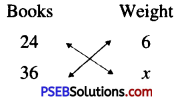
![]()
![]()
![]()
![]()






